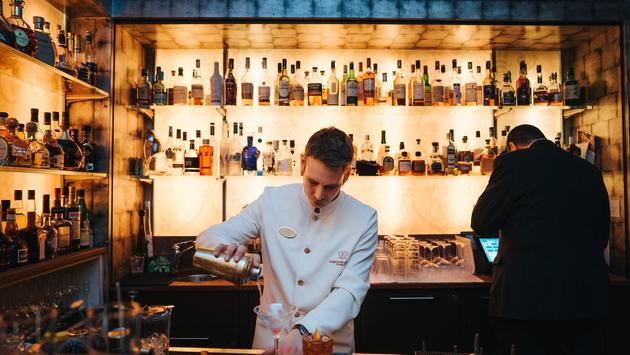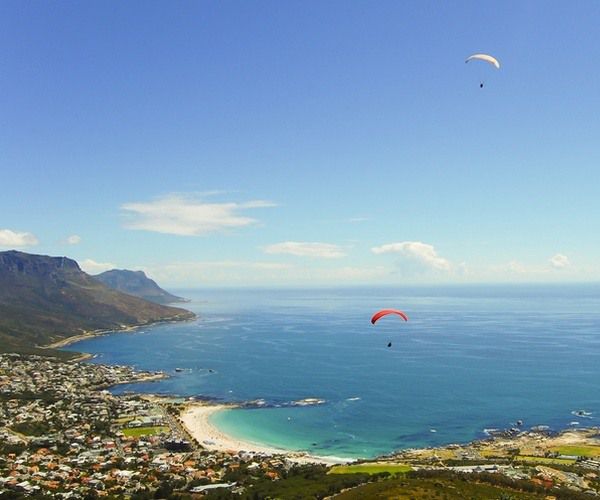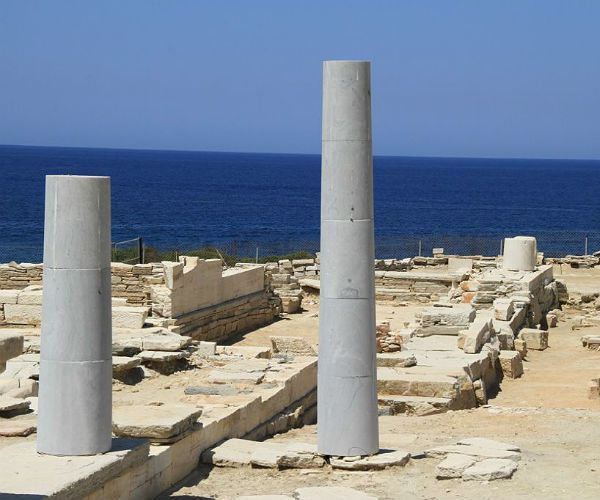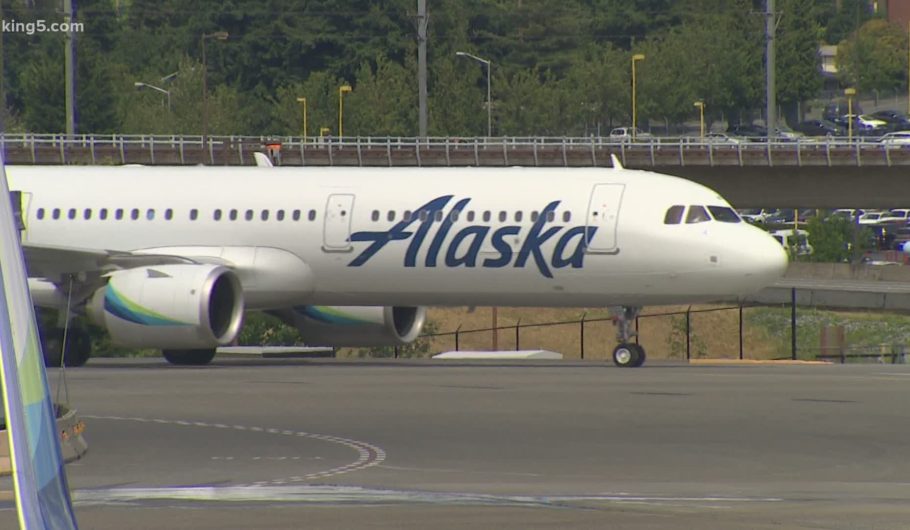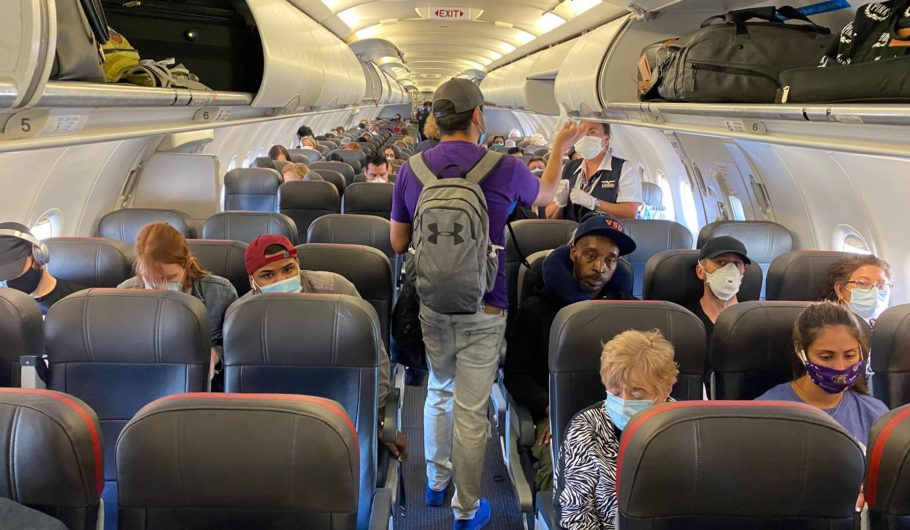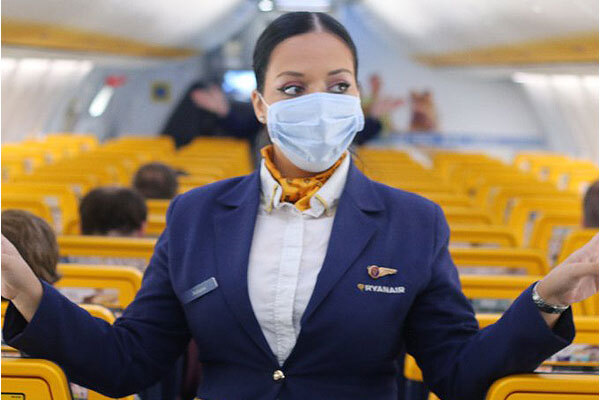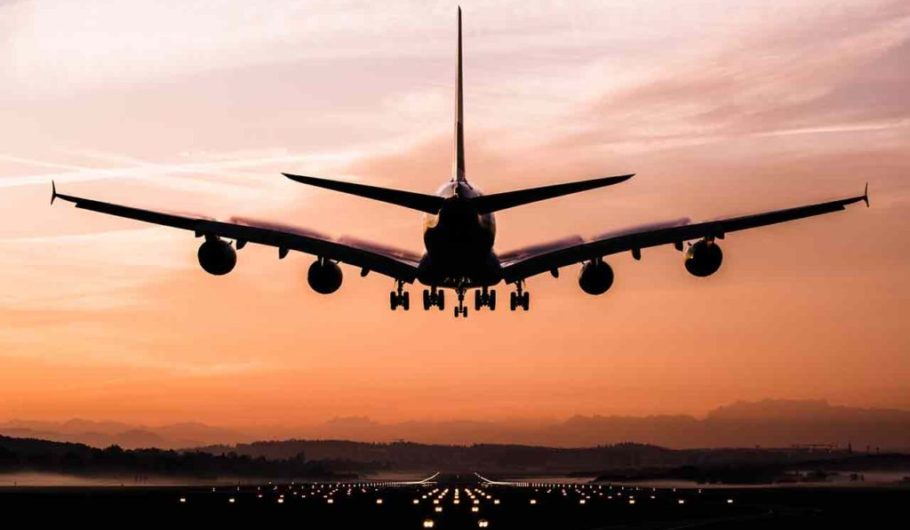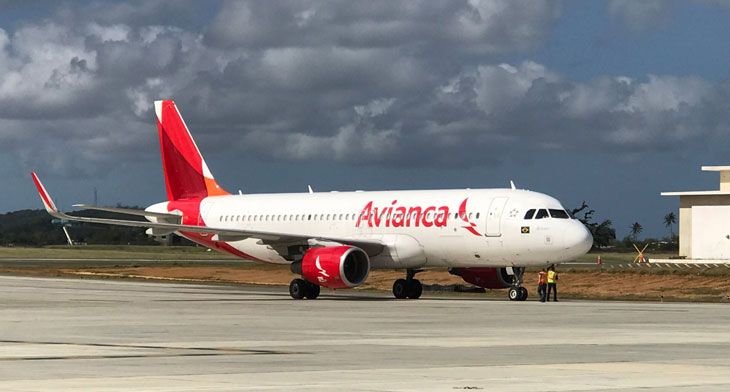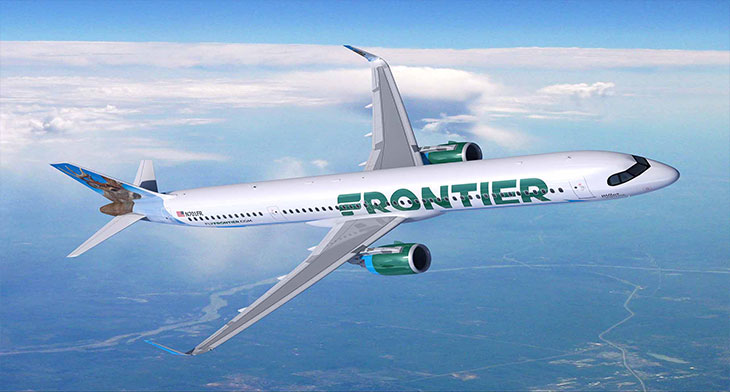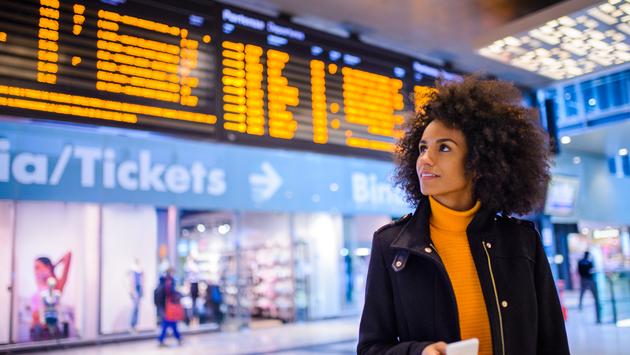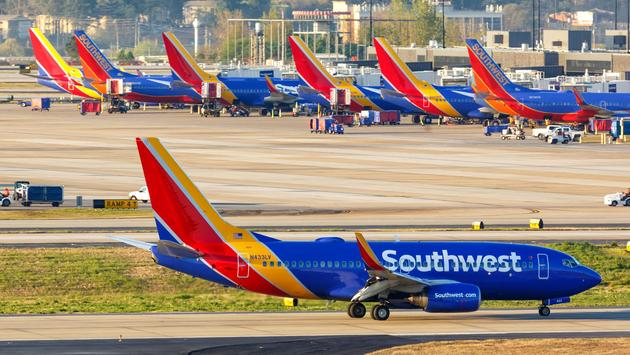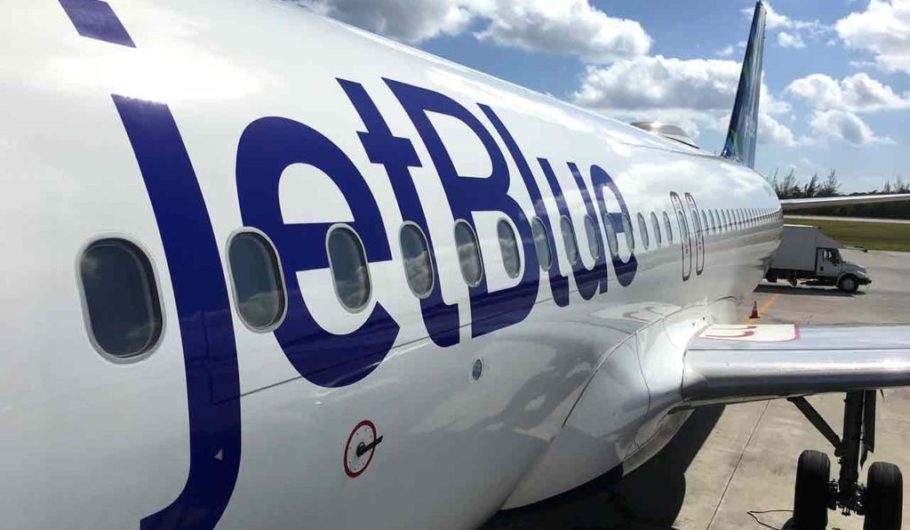Should airlines standardize pre-flight testing for COVID-19?

Airlines are slowly starting to operate more flights as regulators in different regions of the world begin to relax travel restrictions and introduce new guidelines. But do operators need a standardized approach to pre-flight COVID-19 testing to make the process more efficient and help restore confidence in passengers that they can safely fly during the pandemic?
The Transportation Security Administration’s (TSA) daily publishing of the number of travelers moving through U.S. airports this year compared to 2019 hit a COVID-19 pandemic high on June 14, with 544,046 passengers making their way to airplane – still a ways off from the more than 2 million passengers recorded on the same day a year ago, but a vast improvement from the pandemic low of just under 88,000 recorded on Apr. 14. On Monday, most countries in Europe followed the European Union’s guidelines for reopening borders to inter-European travel, with plans to reopen to international travel at a later date.
EasyJet and Lufthansa-owned Brussels Airlines restarted operations this week as European internal borders reopened. Others including Air France, British Airways, and Wizz Air are also increasing the number of flights they operate. Regulators in China and the U.S. have also reached a mutual agreement to allow airlines such as Delta and United to start resuming flights to the region.
But as more travelers start to fill airport lounges and aircraft cabins, the industry is still trying to figure out the best method for testing passengers prior to getting onboard. On Tuesday, June 16, the International Air Transport Association (IATA) and the International Civil Aviation Organization (ICAO) published new guidance on COVID-19 testing for air travel, with the agency advocating for the use of tests that are accurate, fast and can be performed hundreds of times per hour at busy airports.

Dr. David Powell, medical advisor for IATA, provided some updates on how airlines can achieve their recommended guidelines for COVID-19 testing moving forward during the organization’s weekly pandemic media briefing.
“We know that we’ve been looking at testing to facilitate air transport really in two areas. One is can we make the fight itself self safer by testing prior to the flight and the second area is can we use testing to reduce the chance of importing somebody whose infectious on an international flight,” Powell said.
Other considerations for airlines include who will administer the test and verify the results, considering most airlines do not have medical experts on staff and readily available to perform such testing at airports. IATA believes the verification and testing should be managed by a public health agency, therapeutic agency, or scientific agency.
Some airlines and airports have already adopted their own measures for testing for COVID-19 related symptoms, in place of the type of testing outlined by Powell. Heathrow Airport is actively trialing the use of UV sanitation, facial recognition thermal screening technology, and contactless security procedures. In Terminal 2, the airport is using camera detection systems that are capable of monitoring the temperatures of multiple people as they move through the airport.
Emirates, in partnership with the Dubai Health Authority, has been performing COVID-19 blood testing on certain flights at Dubai Airport, while Etihad Airways partnered with Elenium Automation to trial new technology which allows self-service devices at airports to be used to help identify travelers with medical conditions, potentially including the early stages of COVID-19. United Airlines has integrated a new “Ready-to-fly” checklist in its mobile application, that features a “health self-assessment” as part of its check-in process.
IATA’s Powell describes the Real-time Reverse Transcriptase Polymerase Chain Reaction (PCR) as the “gold standard” he is recommending for airlines to adopt in a way that is administered by medical experts. The current standard process for a PCR test involves a swab going through the nose and down into the back of the throat, although Powell believes less invasive versions are becoming available that could be administered by airlines.
“There are some tests being developed which will hopefully be able to use a saliva sample instead because that’s much easier, you can put a little swab in the mouth and take it out again and you also don’t need a trained health care worker to administer that test,” Powell said.
When asked whether the development of an industry-wide pre-flight testing standard could help, Powell explained the positives and negatives associated with developing such a standard.
“It’s certainly likely that widespread testing would increase [passenger] confidence, but it comes at a cost, in terms of the price, the delay, imperfect reliability, and the discomfort of it all. Nothing in COVID-19 is perfect,” he said. www.aviationtoday.com
Finding the perfect cocktail bar in Paris

While craft cocktails and speakeasy-style cocktail bars are a big part of American drinking culture, the phenomenon hasn’t quite taken over Europe yet. In places like Ireland and England, “cocktails” are sugary sweet concoctions, usually sold to young people who haven’t developed a more refined palate or can’t drink straight beer or whiskey. In France, people drink unadulterated wine or the occasional aperitif, which is usually something simple like a Ricard with water. The speakeasy theme that so many American cocktail bars have taken on doesn’t make sense in Europe, as Prohibition never existed there. You can find great cocktails at old bastions of the original cocktail like Harry’s and the Ritz, but they don’t offer the same ambiance that bars in the speakeasy cocktail world do.
The speakeasy-style mixology craze is starting to show up more and more in Europe, as drinks become more of a craft, similar to culinary arts. At the same time, exclusivity and a hidden element give modern bars a certain pastiche, even among tourists. In cosmopolitan cities like Paris, you can find a number of hip, cozy, or interesting spots to get mixed drinks of the artisan type (as opposed to the sticky-sweet type), as long as you know where to look.
The comfortable space: Sherry Butt
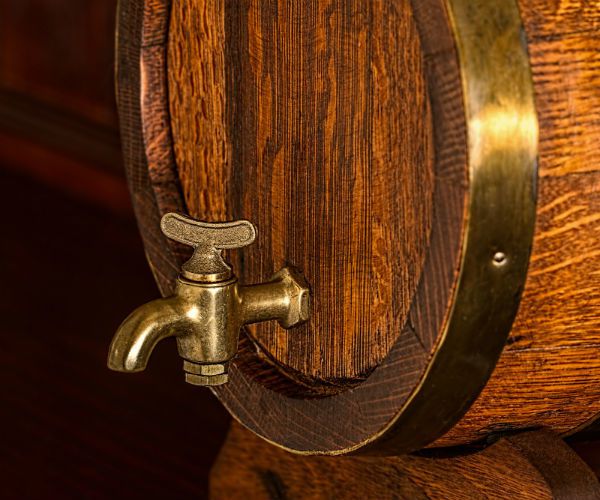
20 Rue Beautreillis
Just to clarify: A “butt” is a measurement of wine, equivalent to two hogsheads, or 126 gallons, to be precise. So the Sherry Butt would be 126 gallons of sherry. You won’t have to drink that much to enjoy this comfortable space, where there’s plenty of room to sit on a couch and sip a curated cocktail and have a quiet chat.
The bar is easy to find, halfway between Place des Vosges and the River Seine, and not far from la Place de la Bastille. It’s a great place to stop after dinner at a French cafe, or late at night if you’re ready for a nightcap. The music is quieter than some of the other bars on this list, making it ideal for a tete-a-tete with an intimate group of friends.
The true speakeasy: Moonshiner
5 Rue Sedaine
Possibly the most difficult of all the bars on our list to find, Moonshiner is a vibrant, hip spot for Parisians and tourists alike. To find the bar, you have to go through a kitchen and a freezer door in the Italian restaurant visible under the “5” address, which can be a bit unnerving if you’re unsure of yourself.
Once inside you’ll find a vivacious, if dark, scene. The bartenders are extremely knowledgeable and friendly, and even if you don’t see something on their list that you’d like, they can help you find the perfect cocktail for your mood. The place gets crowded later in the night, with people from around the world drinking and dancing, so be prepared to be jostled if you go during peak hours. Unlike many of these cocktail bars, there isn’t a doorman to help you find a seat or space, but that’s a great excuse to make new friends.
The hippest spot: Le Syndicat

51 Rue du Faubourg Saint-Denis
Hailed as “the best cocktail bar in Paris” by several publications, this little spot on the Rue du Fauboug Saint-Denis can be difficult to find if you don’t know what you’re looking for. There’s no sign on the outside, and the storefront is actually papered over, but once you find the address, you just have to go through the usually open door to find this chic bar.
The place runs like a machine, with a single bartender acting like a train operator, calling the shots for the servers and bar backs while mixing up insane cocktails like Explosive, which includes an actual sparkler attached around the glass. The menu changes every season, but is very thoughtful and fun, and well worth it.
The most artsy menu: The Little Red Door
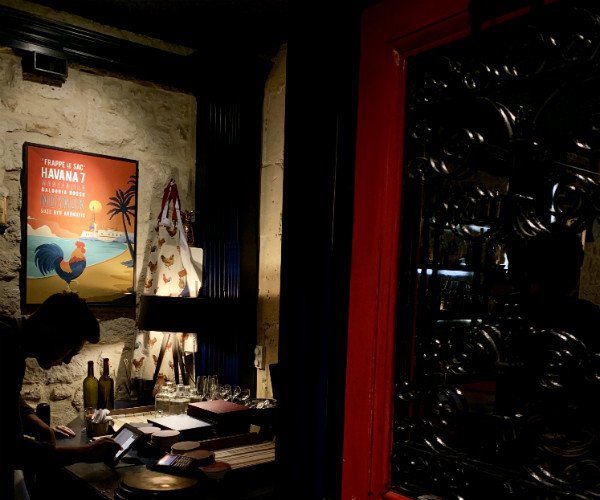
60 rue Charlot
The Little Red Door is relatively easy to find, due to its signature little red door. However, there’s also a doorman outside who can help you get inside and situated. As with many of the bars on this list, the bartenders all speak perfect English, and many hail from other nations than France.
They’re also ready to sit down and chat about their cocktail list, which is made up of untranslatable words from other languages, interpreted into spirits, each accompanied by their own paintings. If that’s too artsy for you, simply tell them the kind of cocktail you usually like, and they’ll make you their own version to suit your tastes.
The industrial feel: UC-61
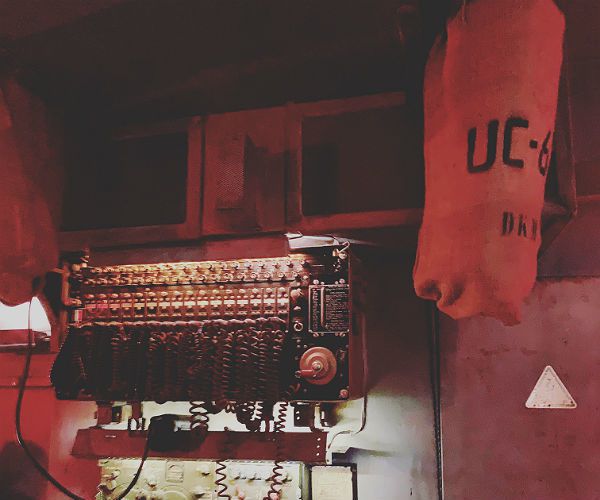
4 Rue de l’Arc de Triomphe
Designed to look like the interior of a real wrecked submarine from World War I from which it gets its name, the tiny UC-61 errs on the side of “cozy” rather than “bright”. The bar isn’t hidden per se; there’s a menu posted outside the bar’s metal door, and a doorbell to ring to get in.
But don’t be fooled – the industrial feel is a foil to the high-end, perfectly-detailed cocktails served within. The mixologists have curated a menu that experiments with flavors and unexpected elements, like eucalyptus, green tea, and even soy sauce, to deliver delightful surprises in a glass. And, of course, the friendly Bretons who founded the place will mix you up something less adventurous if you’re not inclined to try something new.
The dance party: Divine

61 rue d’Hauteville
The giant disco ball in the corner is a perfect detail to this fun bar, where you’re as sure to dance along with the bartenders to the soundtrack as you are to have a drink. While it may look like the kind of bar college kids go to, the knowledgeable mixologists and fine selection of liquors denote something with a bit more panache.
The cocktail menu is a great starting place, with surprising notes like umami, but what makes this bar truly great is the attention to detail to the clientele’s needs. For instance, if you leave to have a cigarette or use the toilet, the bartenders will put your cocktail in the fridge to keep it cool until you return. And unlike many of the other bars listed here, they also have a food menu, which matches the somewhat tacky decor by offering nachos and chicken wings.
If you’re looking for something more than a great glass of wine, these cocktail bars will certainly deliver. If you get lost, there are always helpful people ready to point the way, thanks to the popularity of these spaces among Parisians and tourists alike.
By Ravi Coutinho, Founder and Lead Golf Travel Expert at Worldwide Golf Adventures
Virgin Atlantic removes alcohol sales on its flights
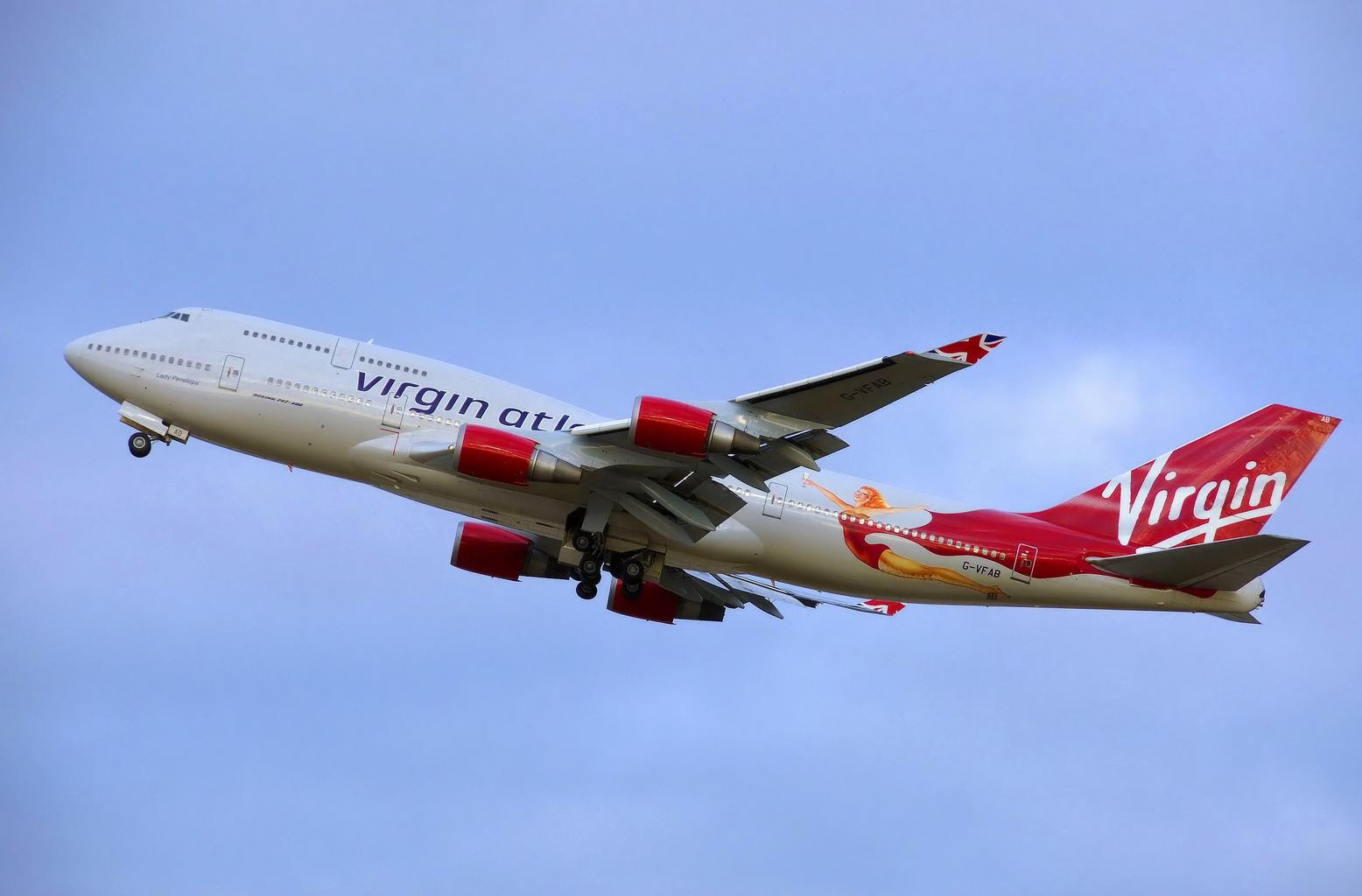
Virgin Atlantic has removed alcohol onboard flights as part of a wider overhaul of its catering service it hopes will reduce the risk of coronavirus spreading between passengers.
A spokesperson for the airline told the drinks business it will remove alcohol sales when some flights restart on 20 June, and will also offer onboard meals in a way that they “come straight from a controlled catering environment to our customer’s seat, reducing interaction.”
Virgin Atlantic said the alcohol ban is a temporary measure and will be kept under review.
Virgin Atlantic will reopen five core flight routes on 20 and 21 June, months after the airline was forced to go into hibernation as coronavirus lockdowns brought international travel to a halt.
It will reopen routes from London Heathrow to New York, LA, Hong Kong, Shanghai, and Orlando.
Passengers will all be supplied with their own PPE kit with medical-grade masks, surface wipes, and hand sanitizer. All customers and crew will be asked to wear their masks for the duration of the flight. Dedicated isolation areas will also be put in place on each flight for any customers or crew who may present symptoms while onboard.
Juha Jarvinen, chief commercial officer, Virgin Atlantic, said: “As the Covid-19 crisis stabilizes and demand slowly returns, we are looking forward to welcoming our customers back onboard and flying them safely to their favorite destinations. To ensure the health and safety of our customers and our people, we’re introducing new measures at every point in the journey to offer peace of mind when taking to the skies with us.”
Budget airline Easyjet, which is resuming flights today (15 June), has also cut alcohol from its in-flight catering. Passengers will be limited to a glass of water, with food service also suspended. Customers, cabin, and ground crew will be required to wear masks throughout their journey.
A spokesperson for Easyjet said the new measures “have been implemented in consultation with aviation authorities ICAO and EASA, and in line with relevant national authorities and medical advice through the airline’s chief medical adviser.”
British Airways will not suspend alcohol sales, according to a spokesperson, but is also reworking its food and drink offer to reduce contact between passengers and crew.
The airline will roll out an “enhanced temporary catering proposition” from June 16, the spokesperson said.
Customers traveling to a long haul destination will be offered pre-prepared meal boxes including dishes such as a salad, hot entrée or sandwich, and a selection of alcoholic and non-alcoholic beverages. Snacks will also be available between meals.
Customers traveling in Club or Business class will also be able to enjoy a selection of alcoholic and non-alcoholic drinks with a pre-prepared meal, and those traveling in economy class will receive a complimentary snack and a bottle of water. British Airways’ hot towel service will not be available while the new measures are in place.
A British Airways spokesperson said: “As we navigate our way through these unprecedented times, we will continue to take advice from relevant authorities and incorporate this into the development of our onboard experience.”
Algarve delight, Longevity Cegonha Country Club

Join a Pilates class, take the shuttle to Vilamoura’s marina, opt for a personal training session and then spend time in the relaxation room before dinner. All this plus a staff as warm and welcoming as the Algarve sun.

There’s a luxurious freedom to life at Longevity Cegonha Country Club (LCCC). Many guests are taking time out from busy lives putting together a “me-time” programme of massages, meditation and sunbathing: looking to rebalance, recharge and relax.
Alternatively, Longevity Cegonha Country Club can be a boot camp, with a rigorous regime to get back in shape. Start with the energising “Shot of the day”, something like ginger, lemon and vinegar before moving onto the breakfast smoothie.
The welcome

With just six rooms and 26 suites, by a process of elimination, the reception staff usually know who you are as soon as you arrive.
Then there’s a tour of the club. Imagine a quintessential Portuguese village – pastel pink and pale yellow houses, green wooden shutters, those Algarve fluted chimneys, vivid red bougainvillea contrasting with white walls, traditional-style gas lanterns perched on posts and a lily pond – then you’ve got the oasis of the rural calm that is LCCC.
The rooms

Tiled with cooling ceramic tiles, made from local materials, the rooms are comfortable, simple and spacious 4* accommodation. Ground floor rooms have gardens, all with patio furniture and a lawn, some with flourishing blue and white agapanthus.
Suites have two bedrooms and a lounge with a dining area. They are popular with friends travelling together or mother / daughter trips. A kitchen, with fridge, is appreciated for cooling drinks. If you want to self-cater there is a four ring hob. But why would you with the Cafe on hand?
The bathroom
Bathrooms are light and spacious with plenty of room to spread out your toiletries around the wash-basin. If you’ve had a tough day in the gym – or with your personal trainer – there’s a deep, wide bath for a restorative soak. Obviously, there’s a shower too and a generous supply of fragrant toiletries.
The facilities

There’s a crescent-shaped pool, with a jacuzzi, for gazing out over those pine forests. Tennis court too.

The Iyashi dome, a high-tech Japanese sauna, is probably the headline grabber. It’s a cross between an MRI scanner and tandoori oven which detoxes, purifies, removes up to 600 calories and trims your waist in 30 sweltering minutes. Sauna, sensations shower and relaxation room are all based around the Spa and it’s treatment rooms.
Everyday there’s a full programme of dancing, Pilates, stretching and yoga in a studio next to a small gym.
The location

An easy 20 minutes transfer from Faro airport, LCCC is inland from Vilamoura and runs a shuttle into the marina. Alternatively you can hire bikes to explore.



Cost
Longevity Cegonha Country Club offers the 5-night Longevity Feel Rebalance & Golf starting from 1,668EUR/£1,490 per person in a single classic room.
The final verdict
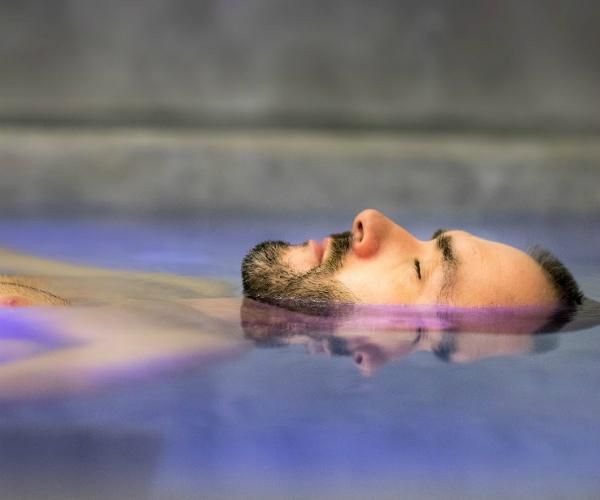
“It’s so much more relaxed than most Wellness places,” said one veteran of many a retreat. “You can dip in and out of the programe as you like. It’s sociable but without the peer pressure of some health resorts. If you want a break from the dietary programe you can choose to have chicken with the salad. If you want an evening off find a restaurant by Vilamoura marina.”
It is hard to leave Longevity Cegonha Country Club without feeling healthier for the experience and also without making some resolutions for a better future.
By Michael Edwards
Cape Town best lesser-known activities
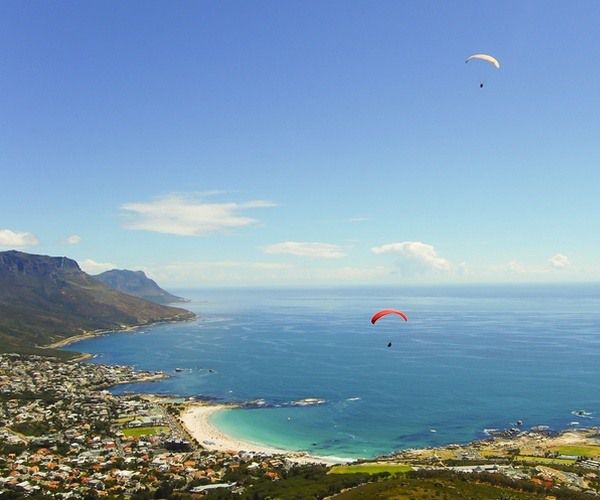
Cape Town is the most visited part of South Africa, and there is a well established set of outstanding attractions that are always high on the list of every visitor. But the city still has plenty to offer once you’ve taken the cable car up Table Mountain, seen the harbour and waterfront area, visited the penguins at Boulders Beach, and explored the Cape Point Nature Reserve. These may well be the best known of the attractions, however for many visitors it will be some of the less known activities that will really leave then with the long-lasting memories once they return home.
Motorcycle sidecar tour around Cape Point or the winelands
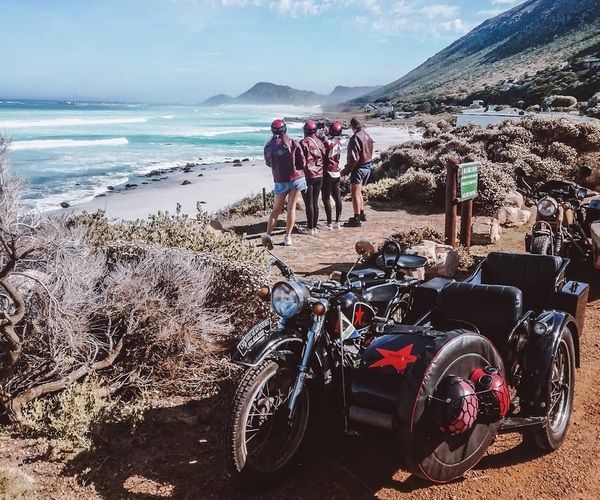
There is nothing quite like being driven around Cape Town in the sidecar of a vintage CJ750 motorbike with Cape Sidecar Adventures. This unique way of seeing the sights in and around Cape Town has become increasing popular and you have a few options of routes to choose from too – from a 2 hour cruise along the West Coast or along Chapman’s Peak to longer half-day or full-day tours. The longer tours can take you down to the Cape Peninsula or to the cape winelands where you can spend the day visiting the local wine estates. Each motorcycle can take two guests (one in the sidecar and one on the pillion), and all the routes are great fun and offer some wonderful scenery. The guides provide you with all your riding gear (leather jacket, helmet and goggles) so you look and feel the part, and when we did their tour of the cape winelands both the ‘bike and our leathers got plenty of attention from other guests who had joined a more conventional tour.
Paraglide over Cape Town
This might sound like an activity for only the adventurous, but seeing Cape Town from the air is completely possible – and safe. Experiencing a tandem paraglide, means you are in your own seat, attached to the pilot and ‘flown’ by an experienced pilot. You don’t need any previous experience to enjoy this activity, just sit back and enjoy the feeling of weightlessness, complete silence and uninterrupted views of Table Mountain, Cape Town and Camps Bay.
Cape Malay cooking tour in Bo-Kaap

Feel like experiencing an authentic meal in Cape Town? Cape Malay cooking is one of South Africa’s traditional cuisines and it plays a large role in Bo-Kaap culture in Cape Town. Why not book a cooking tour, hosted in a true Cape Malay home! Explore the colorful community of the Bo-Kaap and learn how to make samosas, roti’s and understand the wonderful spices in a masala. The tours end with a lovely social meal, enjoying some lovely dishes and the food you have learned to cook.
Tree canopy walkway at Kirstenbosch Gardens
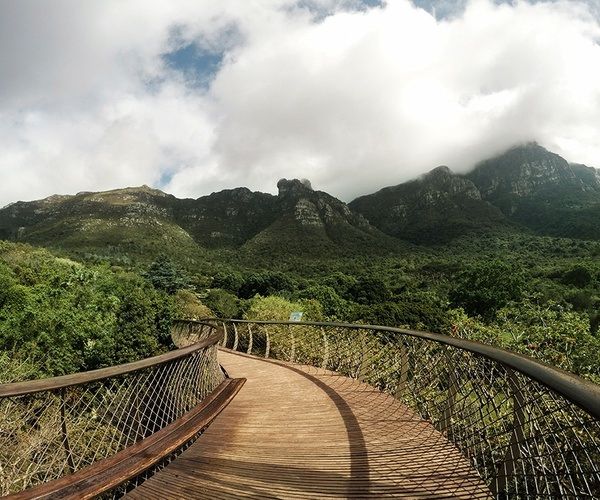
When visiting Kirstenbosch Gardens, be sure to include a stroll along the new Centenary Tree Canopy Walkway, a 130m curved steel and timber bridge that has been built 12m above the tree canopies, offering breath taking views of the gardens below with minimal impact to its surroundings. Known locally as ‘the Boomslang’ (meaning tree snake), the walkway dips and curves its way through the forest and over the trees of the Arboretum.
Hop-on, hop-off wine tram in Franschhoek
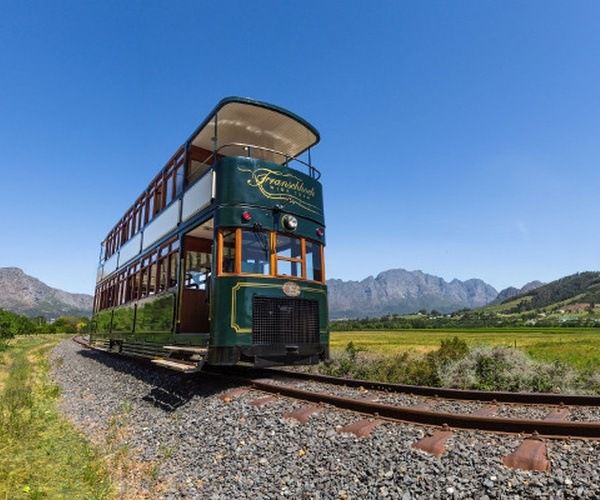
Franschhoek – known as the ‘Food and Wine Capital’ of South Africa, offers a wonderful and unique way to indulge in just that – excellent food and wine! The wine tram, offering 6 different route options of this ‘hop-on, hop-off’ experience, allows you to comfortably travel through the winelands, enjoying the scenery of vineyards and mountains whilst visiting some of the top Wine Estates in the area along the way.
Wine tastings are offered at the estate cellars and most have on site restaurants where you can enjoy anything from a light meal to a three course lunch. Prebook your cellar tours and lunch when booking your tram tickets as this is a really popular activity!
By Paul Campbell
Best archeological sites to visit on a private yacht in Greece
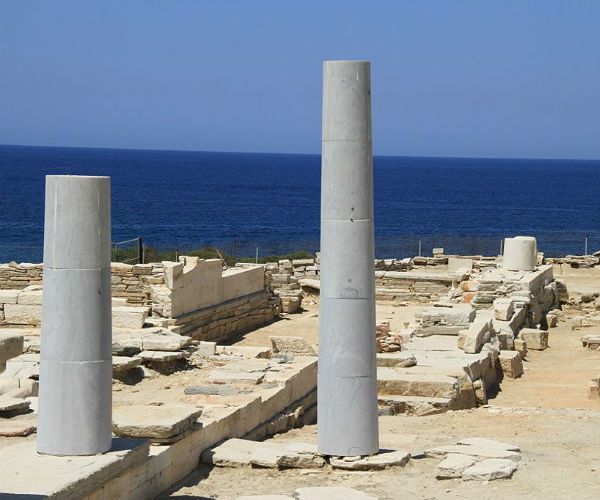
Amidst the white cubic houses with cobalt blue trim, the blue domed white churches, the white trimmed stepped walking streets, the arid beautiful terraced landscapes, the olive, lemon and orange trees, and the grazing goats, are remnants of the ancient civilizations that also once roamed these beautiful islands millenniums ago. And for the historian, and archeology buff, the best way to visit the various and fascinating excavations taking place on these islands, some only having unearthed 5% of what is still to be revealed, is by private yacht charter, as there is no regular ferry system that connects exactly the islands that have these archeological sites, nor is there airline service. The only way to travel between the Cycladic Islands of your choice is to charter a yacht and let the Captain know where you want to go. As after all, this is what private yacht charter is all about….cruising where you want to go, when you want to go.
Akrotiri, Santorini Island
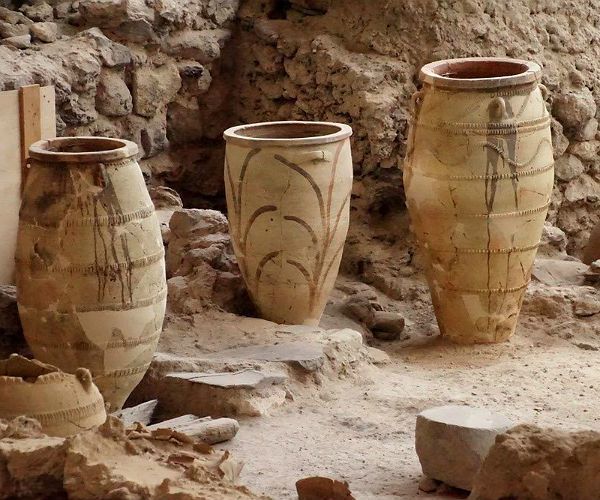
Explore the many secrets of the magical mystical Cycladic Island of Santorini as tucked away on the Island of Santorini, excavations continue revealing the remains of an ancient wealthy trading city. This is a city lost in time; covered by ash and debris in the massive volcanic eruption in the 1600’s BC when the island blew its top, literally. It was in 1967 that excavations began in earnest, and still continue at a site in Akrotiri on the island of Santorini where only 5% of this ancient city is said to be revealed to date. The ruins are fascinating to see, and excavated artifacts are on display at the Archeological Museum in Fira.
The lost city was discovered in the 1800’s in fields in an area of the island known today as Akrotiri. As the origin of the civilization that built this extraordinary city with three story apartment buildings, running water and a city sewer system was unknown, the excavations are now known as Akrotiri by their location on the island. That which has been excavated, based on excavations in other parts of the world, is now felt to have been a wealthy Minoan trading city, that clearly evacuated the city before the final and most devastating volcanic eruption on Santorini Island completed covered the abandoned city which was then lost in time.
Today, the excavations continue under a covered area where boardwalks and raised walkways allow the visitor to walk amongst that which has been revealed to see what was left behind so many years ago, including city streets, apartment buildings, storage rooms, even what may have been bathrooms with running water. Important wall murals have been removed and carefully restored to be seen in the Archeology Museum in Fira along with artifacts from the excavation. Guides are available to be hired on site, and are recommended.
Delos Island
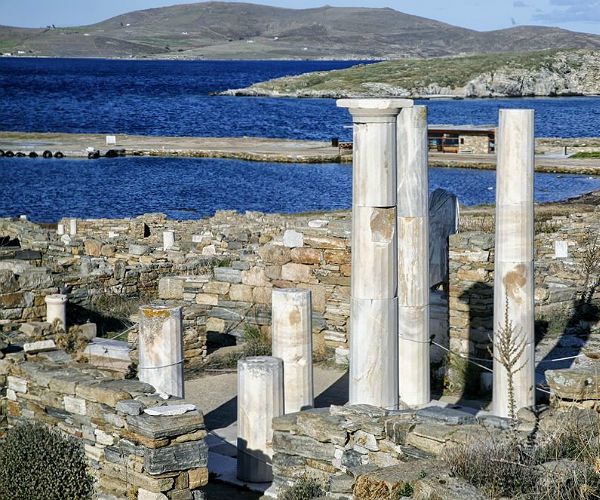
Delos Island, the center of the Cyclades, has been inhabited since at least the 3rd millennium B.C. As did the Hellenic Nation, this island rose in importance and around 480 BC, became the center of the Delian League. The Delian League located their treasury here solidifying the importance of this island in the ancient world. Today Delos is a UNESCO World Heritage Site and one of the most important archeological sites in the world. This island, located just next to Mykonos is open to visitors 12 hours during the day, every day of the week.
Claimed as the mythological birth place of Apollo, Delos was immensely wealthy and was so impressive that the Romans retained this island as a free port when they came into power. Delos finally collapsed in 88 BC when conquered by Mithridates. Today, the remains of what was once a very powerful island are only partially excavated.
Visit the museum first which is where the famous marble lions that once guarded the sacred lake are now stored. The ‘sacred lake’ is the supposed birthplace of Apollo which is close by, but now over grown and dry.
All over the island are the remains of temples, homes, and monuments. There is also an impressive array of different cultures that left their mark on the island. Shrines for Samothracian, Egyptian, and Syrian Gods are interspersed amongst the Greek shrines. The Temple of Isis stands high above most of the town. Entire sections of the residential areas are more or less intact. The streets are still clearly outlined, many of them with sewers running underneath. The northern section of town featured more modest living quarters with smaller apartments, each with only several rooms.
Wildflowers have gained foothold in the ruins, peaking out in various places, to add color. A hill rises on the south side of town in an area known as the theater district. It is here that some of the truly opulent houses can be found with beautiful mosaic floors often showing dolphins, which symbolized Apollo or panthers, which symbolized Dionysus. In the House of the Masks, which is virtually fully intact, a mosaic can be seen of Dionysus riding a panther, along with another mosaic of theatre masks. Several rooms in this building contain large sections of the original wall decoration as well as the floor mosaics.
It is well worth spending a full morning exploring this island and visiting the museum by having your yacht anchor in Delos Harbor and coming ashore by ship’s tender. Private guides are available and are recommended.
Milos Island
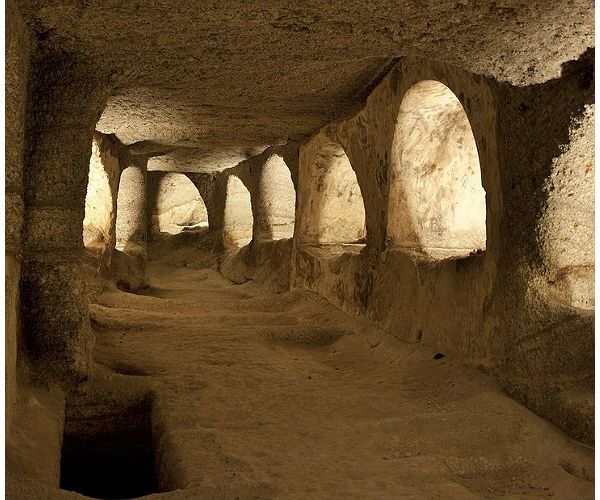
A volcanic Island, Milos was prized in Ancient Times due to the cache of volcanic created obsidian rock found on the island and mined for making weaponry, and knives needed for everyday living and hunting. Mining obsidian and the creation of weapons, knives and other utensils and implements on the island was the main industry on Milos in Ancient Times making Milos a very wealthy island which perhaps provided the money to commission the beautiful and famous sculpture of Venus de Milo found on the island and now on display in the Louvre Museum in Paris. The archeological and historic sites on the island are several.
Phylakopi excavation site on the island was one of the greatest pre-historic settlements in the Aegean. The settlement was heavily inhabited starting from the Early Bronze Age to the Late Bronze Age and into the Mycenaean Period until around 1100BC when the settlement was abandoned. Artifacts found show that the inhabitants were traders with the rest of the Cycladic Islands, and as far away as mainland Greece and the Eastern Mediterranean. Trade items from this Milos settlement were items made mainly of local obsidian. Numerous clay and stone vessels, stone, clay and bronze figurines, and bronze items have been found, however, the most impressive find is a gold face mask.
Right above Klima and below the settlement of Trypiti overlooking the sea where the ancient town of Milos once was is an ancient Roman Theatre, along with a stadium, an ancient market, and an early-Christian baptistery. The Roman Theatre however is the most impressive structure left, with 7 tiers built to hold 700 spectators that accessed the theatre via 6 stairways. Parts of the stage are preserved along with carved marble reliefs.
Also, on Milos are early Christian Catacombs, the only preserved catacombs in Greece dating back to the 2nd century AD and used until the late 5th century AD as the cemetery of the first Christian community on the island. To date 291 tombs have been found, however it is estimated that there are at least 1500 to 2000 tombs in the area with over 8000 bodies buried within the tombs, as each tomb housed more than one body. The tombs were all arched and dug into the soft rock. The catacombs were discovered accidentally by looters in 1840.
On the island is an Archeology Museum and a Mining Museum. For any archaeology buff and historian, Milos offers quite a bit of history and important archeological sites, and several museums, in which time can be spent learning the fascinating history of an island that grew wealthy from that which its volcanic origins provided, caches of obsidian.
Antiparos-Despotiko – Tsimintiri
Once believed to have been one island in Ancient Times, these three islands, just off of the coast of Paros Island, and only reachable by private yacht, are the site of what is increasingly being understood to have been an important ancient settlement. Tsimitiri mainly has graves located on the island, and it has not yet been determined exactly how the land on Antiparos was involved, however, excavations are ongoing on Despotiko where there appears to have been a very important Sanctuary to Apollo.
Despotiko was a maritime crossroads where visitors and goods came from mainland Greece, other Aegean islands, the Ionian Islands and Rhodes, Cyprus and Egypt. The sanctuary, originally built by the Parians from Paros out of famous Parian marble, may have been larger than the Sanctuary to Apollo on Delos Island.
Many artifacts have been found including small oil and ointment containers, clay figurines, ceramic objects and statuettes, signet rings with semi-precious stones, bronze and ivory clasps, stone, glass and gold beads, bronze, silver, lead and iron objects, swords, domestic implements and many agricultural tools, ceramic vases, basins, bottles, lamps, pots and amphorae, as well as fragments of marble Kouros statues and other sculptures; gold and bronze jewelry; faience scarabs; and a striking clay statuette depicting a goddess (ca. 650 BC).
The ruins are open air and easy to wander around. There may be archeologists at work as this is an ongoing relaxed archaeological dig, relying on volunteers and donations and may be an archeology site where you can engage the archeologists and volunteers, depending on who might be there for more information on what might be happening and being found in a more “hands on” manner.
Ios Island

On Ios is the very important archeological site of Skarkos, thought to be over 4500 years old and the best ancient Cycladic prehistoric site in Greece. Located in western Ios, the archaeological site is overlooking one of the finest natural harbors in the Cyclades, and is easily reachable by having your yacht on anchor in the harbor with the archaeological site of Skarkos up on the hill overlooking all. Skarkos was inhabited from around 2800BC to 2300BC during what is the Early Cycladic II period.
Excavations reveal well built houses set closely together along narrow streets and squares. Today still able to be seen are the ground floors, doorways and stairways. Most of the buildings were at least two stories built with stone walls. The settlement was abandoned after an earthquake and never re-settled which kept the remains well preserved until found again in recent history.
Many artifacts have been found including pottery, stone tools, figurines, and obsidian tools. Skarkos prospered as it lay at the junction of several key trading routes that linked the Cycladic Islands with Crete, Asia Miner, and mainland Greece. Visit the Archeological Museum in Ios as well to see artifacts from Skarkos as well as the archeological site. In 2008 the site received a European Union Prize for excellence in Cultural Heritage Conservation.
Private yacht charter is your own hotel and restaurant that you can take with you, with your own private crew for full service, while you visit archeological and historical sites in the beautiful Cycladic Islands of Greece. And as an added bonus, also enjoy the crystal clear blue green waters and cool off with a swim, relax on a beach, join the villagers around a table at a local taverna for ouzo and octopus, and overall enjoy all there is to enjoy in addition to the history and archeological remains of the Cycladic Islands of Greece. And after learning all there is to know about the history and archeological sites during the day on an island, perhaps at night, kick up your heels in a lively Greek dance or two in a village square under the stars, in the cool evening air.
By Missy Johnston is from Yacht Charters Newport.
New York, London, Paris, Rome and Bangkok city secrets

You can never know a truly great city, as the world’s finest metropolises are ever-morphing, ever-changing enigmas, unable to be captured in one moment in time. That is exactly what makes them great – they’re unexpected, unpredictable, and entirely fascinating. Here are 5 secret tips that will help you uncover the best of your favourite cities.
Little Venice, London
Revered English author Samuel Johnson said that when “a man is tired of London, he is tired of life; for there is in London all that life can afford.” No words could be truer today. For centuries, the British capital has been the heart of the UK, of Europe, and of the world. So why is it that when you think of a trip to London, quaint waterways never come to mind? The city does, however, boast an impressive range of beautiful canal-side walks from Stratford to the picture perfect Little Venice. West London’s answer to Italy’s waterside city offers a tranquil walk through some of London’s most elaborate barges, with views of the London Zoo, some of the city’s most desirable streets and plenty of cafes to sit down and enjoy the view.

Brooklyn Night Bazaar, New York
Brooklyn is New York’s hippest borough, so it’d be a shame to not experience the living, breathing epitome of New York cool. The Brooklyn Night Bazaar is open Fridays and Saturdays from 7pm – 2am, and offers an unrivalled selection of fun from food, drinks, markets, games and live music. Housed in a former Polish catering hall, the bazaar offers a 400-capacity music venue and over 50 vendors selling anything and everything, as well as a permanent restaurant offering tasty Southern treats. On top of this, you can opt for a more active night by making use of the city’s first (and only!) entertainment complex that merges ping pong, mini golf, arcade games and karaoke. There’s no cover charge, and there is hours of fun to be had!

Caveau des Oubliettes, Paris
Paris is famous for many things, but its top notch jazz clubs aren’t always on the “must-see” list of all those visiting. It’s true that the opulence of Paris is nowhere to be seen in underground jazz venue Caveau des Oubliettes, but rather an authentic slice of the lively Parisian music scene. The space resembles a cave, which provides stellar acoustics for the intimate live performances. Watch on as seasoned pros jam to jazz and locals sit demurely watching, sipping on wine. What this revered jazz club lacks in décor it makes up for in quality of music – it’s been going strong for generations, with Orson Welles and Jean Sartre among past patrons.

Trattoria Etruria 39, Rome
Of Italy’s gifts to the world, none are as evident as the cuisine. From plates of pasta to the perfect pizza, Italy’s cuisine is arguably the world’s favourite and it only gets better once you step foot in the country. Here, food isn’t just something to fill you up – it’s an expression of love from the locals, and everyone is invited to the romance. But finding a traditionally run Roman kitchen can be tough, which is why you have to head straight to Trattoria Etruria 39. You’ll appreciate the chequer tablecloths covered in paper placemats, the loud hustle and bustle of Italians clinking glasses and enjoying the perfect pasta and laughter from the kitchen as this family-run restaurant makes some of the best food in the city. Like most authentic Roman restaurants, the menu changes daily based on seasonality but, if available, the carbonara is to die for.

Spectacular Sunrise, Bangkok
Feel the energy of Thailand’s capital city by diving head first into its renowned cuisine, taking on its energetic street life and exploring its wild party scene. Welcome to the city that doesn’t dare to blink. Or does it? While this city is famed for its undying vibrancy, there’s nothing better than embracing the early morning serenity of sunrise at Lumpini Park. Watch the skies turn pink over the city as you perch yourself in the gloriously lush city park, and lookout for the locals – a friendly group of birds, turtles and lizards will join you for this magically mellow moment in a city known for its non-stop buzz.
By Filip Boyen, Chief Executive Officer of Small Luxury Hotels of the World.
Five days in Provence

Unlike any other European region, the beauty of Provence is that she generously provides a wide array of opportunities for leisure, which never fail to disappoint. From inhaling the sensual lavender lingering aroma to quaffing sweet Rosé under the stars, times here are as delectable as the warmth of the sun that drenches this archetypical French region.
With so much to see and do in Provence it’s always tempting to write a full itinerary for visitors with a day-by-day timetable of things to do and places to go. However, because we all want to see and do different things, and are in Provence for varying lengths of time, it seemed much more helpful to list five activities that you can pick and choose from to help make your holiday in Provence perfect!
A day on the beach
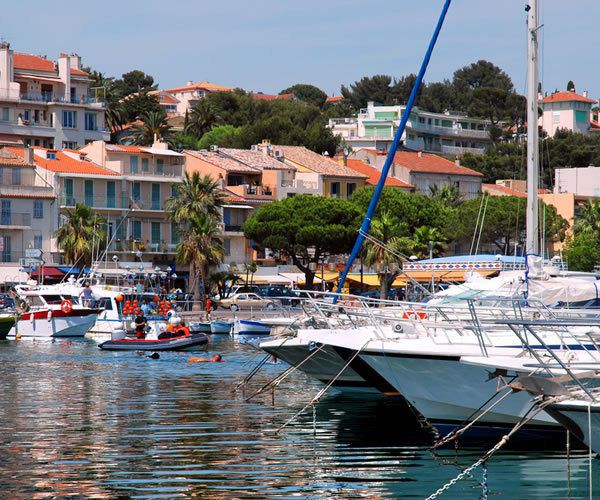
Bandol is a harbour town on the Cote d’Azur, popular due to the bountiful beaches which are encased by the neighbouring hills.
On the West of Bandol is Plage de Renecros. The 400m sandy stretch in a bay guarantees calm waters, hence provides a safe option for seniors and toddlers alike. Most of the beach is free to use, although there are several private concessions providing loungers and parasols. East of Bandol is Plage du grand Vallat – again with sunbed rental and plenty of shade. Plage Centrale in the heart of the town, with easy parking and access to shops. Plage du Capélan offers a more secluded and rocky beach experience with two restaurants serving simple yet tasty dishes.
The enormous Marina in the centre of Bandol floats some serious envy inducing yachts. Board one of the tour boats to explore the Bandol coastline at Pirat Croisieres.
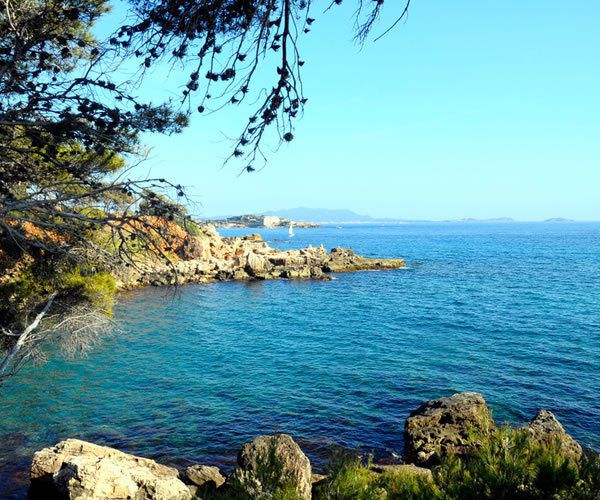
Alternatively float across the short distance to the tiny island of Ile de Bendor. Although only 6 hectares, amongst beaches the island offers hotels, restaurants, museums and exhibitions. From crashing waves one side to calm waters the other, refreshing options are available for both daring swimmers and sunbathers. End your beach day at one of the handful of eateries with the perfect tapas plate accompanied by a chilled glass of dry rose with an ocean backdrop.
A day wine tasting on wheels

A holiday in France wouldn’t be complete without the obligatory vineyard tour and wine tasting. But imagine doing this on electric bikes. Moulin de la Roque, near Bandol was a pioneer in the field of wine tourism and sustainable development. They offer a one-day wine tasting course whereby you will be taken on a journey to the heart of nature around their vineyards. A gentle whirl around with an expert guide will allow you to discover all the nuances of this particular terroir.
You will learn all about the history of this vineyard, the making of wine, the different stages in wine tasting, and of course, taste a selection of wines. Learn the skills of professional sommeliers and gain aroma detection training. And to soak up the grape juice, a vintner lunch is included too.
English is spoken but there are plenty of opportunities to experiment with your French dialect too.
Alternatively, enjoy a wine tasting at the superb Maisons des Vins de Bandol. These tastings will guide you through a range of head-turning vintage regional wines. Afterwards enjoy exploring their extensive selection of wines using your new-found knowledge to decide which you’ll be taking home.
A day in Aix-en-Provence
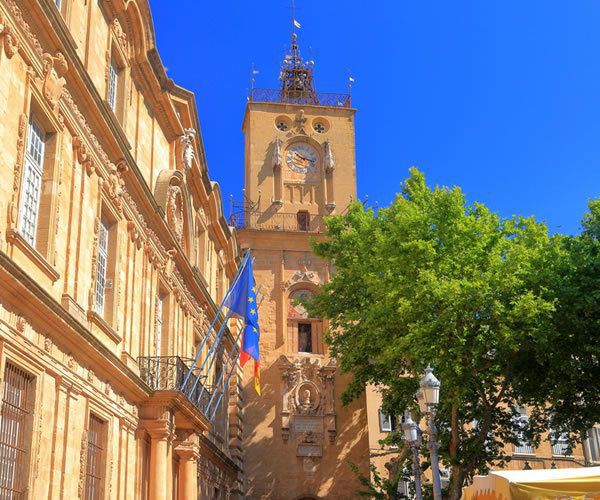
Why not take time to wander off into the wilds? Head to Aix-en-Provence – a beautiful historic town that embodies the flavour of Provence.
The sheer beauty of the region is enhanced by the quality of light, which provides a mecca for artists looking to capture the essence. A painting or drawing course offers an ideal opportunity for all ages to enjoy Provence.

Catherine Moulle is an Aix based artist described as knowledgeable, encouraging and fun. She offers a range of drawing, sketching, painting and travel journal classes on either a private or group booking basis. She is known for teaching to draw what you see, and not what your brain tells you things should look like. A firm favourite for both professionals and amateurs is the one-day sketchbook drawing workshop. Guests illustrate what they see during their stroll around the town. This is a wonderful day out whatever your age, with the added bonus of leaving with some memorable sketches as a reminder.
A day of cooking

France is synonymous with its culinary delights and the Provencal diet provides an edible abundance of fresh fish, juicy fruits and herb encrusted meats, all found in local markets. Bouillabaisse with a fresh baguette washed down with wine and pastis wouldn’t taste the same elsewhere. Instead of just consuming Provence’s wonderful ingredients, why not learn their cooking skills as well?
A favourite cookery class is held in the heart of Provence at Hostellerie Berard, home to father and son team Berard. Both Master Cooks of France, their courses will allow you to discover the gastronomy and the secrets of Provencal flavours. Their themed courses are held in the Bastide des Saveurs, overlooking the stunning kitchen garden brimming with cicadas and birds.
The day starts with a tour of the kitchen gardens during which you select fresh produce to harvest that will be used in your dishes. The best bit is enjoying tasting your creations together at the end of the class, naturally paired with regional wines. English can be spoken, or you can partake in French – as you wish.
A day in the Carmargue
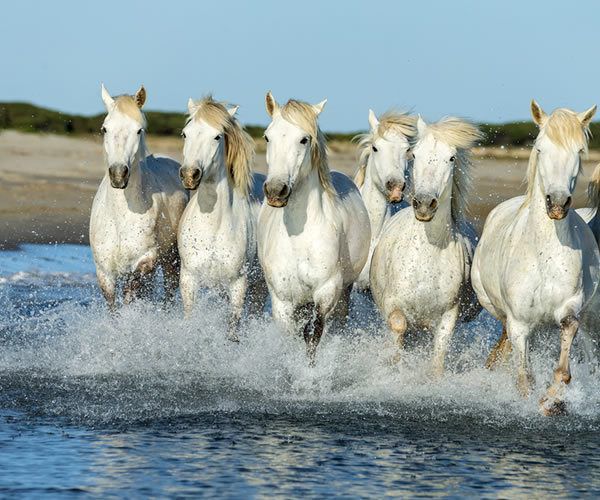
The Camargue is a natural park and one of Europe’s major wetlands, an hour west of Marseilles. There is a huge range of outdoor activities including bird watching, horse riding, hiking, cycling and riverboat trips.
The Camargue Natural Park includes a large UNESCO designated biosphere reserve. Every Spring and Autumn hundreds of thousands of migrating birds head to the wetlands. But visitors also come to admire other wildlife, particularly the pink flamingos. These can be admired in the Camargue ornithological park, a bird park just north of Saintes Marie de la Mer. This is also home to white egrets and herons, and a bird hospital.
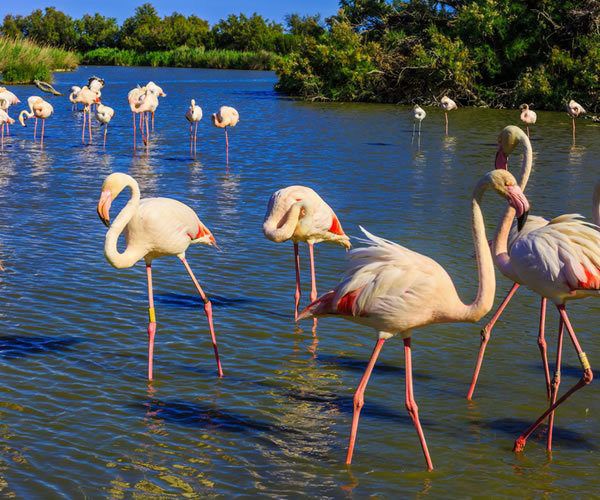
Although, this area is more historically famous for its white horses who have lived here for thousands of years, and are one of the oldest breeds in the world. While some still live semi-wild, most are now used either by the Camargue cowboys for herding the black bulls, or for pony trekking.
There are many riding stables, particularly around Les Saintes Marie de la Mer. Most of these are for tourists to trek across fields or the salt marshes. The Camargue offers great hiking and cycling opportunities on its flat terrain across the Rhone delta. To the east of Saintes Marie, there are miles of largely deserted sandy beaches, only accessible on foot, horseback or bike.
Camargue bullfights (courses camarguaises) are not like Spanish bullfights as there are no matadors and bulls aren’t killed. Camargue bullfights are a competition of agility between men dressed in white, and black bulls; the aim is for the bullfighters to steal the trophies, such as ribbons and rosettes that are placed between the bull’s horns. However Spanish-style bullfighting is also popular around the Camargue area, with major classic bullfighting events in the Arenas at Nimes and Arles.
The Camargue is also famous for its salt and ‘red’ rice. Rice has been produced in the Camargue since the Middle Ages, and today there are some 200 rice producers in over 20,000 hectares of rice paddies.
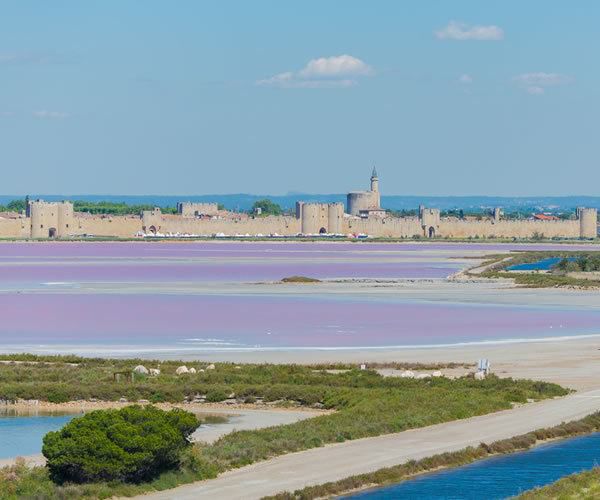
On the western edge of the Camargue area lies the remarkable walled city of Aigues Mortes where you can walk around. In medieval times, this was the Mediterranean port from which the Crusaders set out. Originally on the coast, the Rhone delta has since silted up, and Aigues Mortes is five miles inland.
By Su Stephens
What can we expect from the Mercedes-AMG Project One concept car?
There were colorful lights, music, and dancers on a vast floodlit platform at Frankfurt’s International Motor Show.
The audience of luxury car enthusiasts and global motoring journalists were assembled for the unveiling of a special prototype from Mercedes.
“I think you know what’s coming,” said the flamboyantly mustachioed Mercedes-Benz head Dieter Zetsche into his microphone.
But did we? There’s a lot of unknowns with concept cars, so what can we really expect from the Mercedes-AMG Project One? blogs Simon Heptinstall.
Launched with a sprinkling of stardust
A sudden, momentous engine noise came from backstage, as the automobile behemoth’s new concept car was driven slowly into view.
The driver’s door swiveled spectacularly outwards and upwards, and three-time World Formula One Champion Lewis Hamilton stepped out to an ovation.
Hamilton was the perfect person to support the launch of the astonishing Project One. At the launch, he demonstrated how this hybrid hypercar is designed to take Formula One performance from Grand Prix circuits, and transform it for roads around the world.
Formula One performance for the open road
The Project One doesn’t just take inspiration from Hamilton’s Mercedes F1 car, it’s practically the same – with a few small tweaks made to core features for comfort on the open road.
It offers sensational track-style performance on normal roads. While many sports cars boast of reaching 60mph from a standstill in six seconds, Project One is set to reach 124mph at the very same time.
The key technical feature is that it uses the same 1.6-liter turbocharged V6 engine as Hamilton’s F1 car. Many manufacturers have previously tried to create a racing car for the road. Some have come very close. But, here the Mercedes and AMG designers have found success in virtually fitting a body and two seats to the F1 chassis.
To give you a taste of the action, this is a road-legal car with an engine that will rev to a staggering 11,000rpm. Like the F1 machine, Project One’s drivetrain includes four electric motors which, together with the petrol V6, can produce ‘in excess of 1,000bhp’ and a top speed ‘above 217mph.’
Only 275 models of the car are due to be built in 2019. These have all been snapped up and sold already before buyers have had the chance to see the car. The cost? A cool £2.4 million each!
Technological superiority ready for 2019
The advanced engineering of the Project One includes rechargeable air-cooled lithium batteries, adjustable suspension, carbon-ceramic brakes, and adjustable traction control.
Project One can even operate in electric-only mode, essentially becoming a four-wheel-drive electric supercar (albeit with a range of just 15 miles.)
Drivers have the ability to switch between driving modes that range from settings used by Hamilton to a reduced-power ‘everyday’ mode.
There may be two carbon-fiber adjustable bucket seats inside but the driver’s controls retain the general look and feel of a track car. All major controls are placed on the rectangular steering wheel within a thumb’s reach, including paddles to shift the eight-speed gearbox. Expecting to see commonplace wing mirrors? Instead, cameras display views on three screens that also feature vital driving information!
Gorden Wagener, Chief Design Officer at Daimler AG, says “Project One is the hottest AND coolest car we have ever designed. It combines our design philosophy of sensual purity with the performance of our Formula One racing cars and is the perfect embodiment of performance luxury.”
Excitingly for car lovers and tech enthusiasts across the globe, Mercedes bosses are currently planning to unleash the car on the Nürburgring, where they claim it’s likely to break the lap record set by a Porsche 956 race car in 1986.
I, like many other car enthusiasts, wait with bated breath to see this world-class concept car become a reality. www.avis.co.uk/inspires/
Alaska Airlines to make health questionnaire part of the check-in process
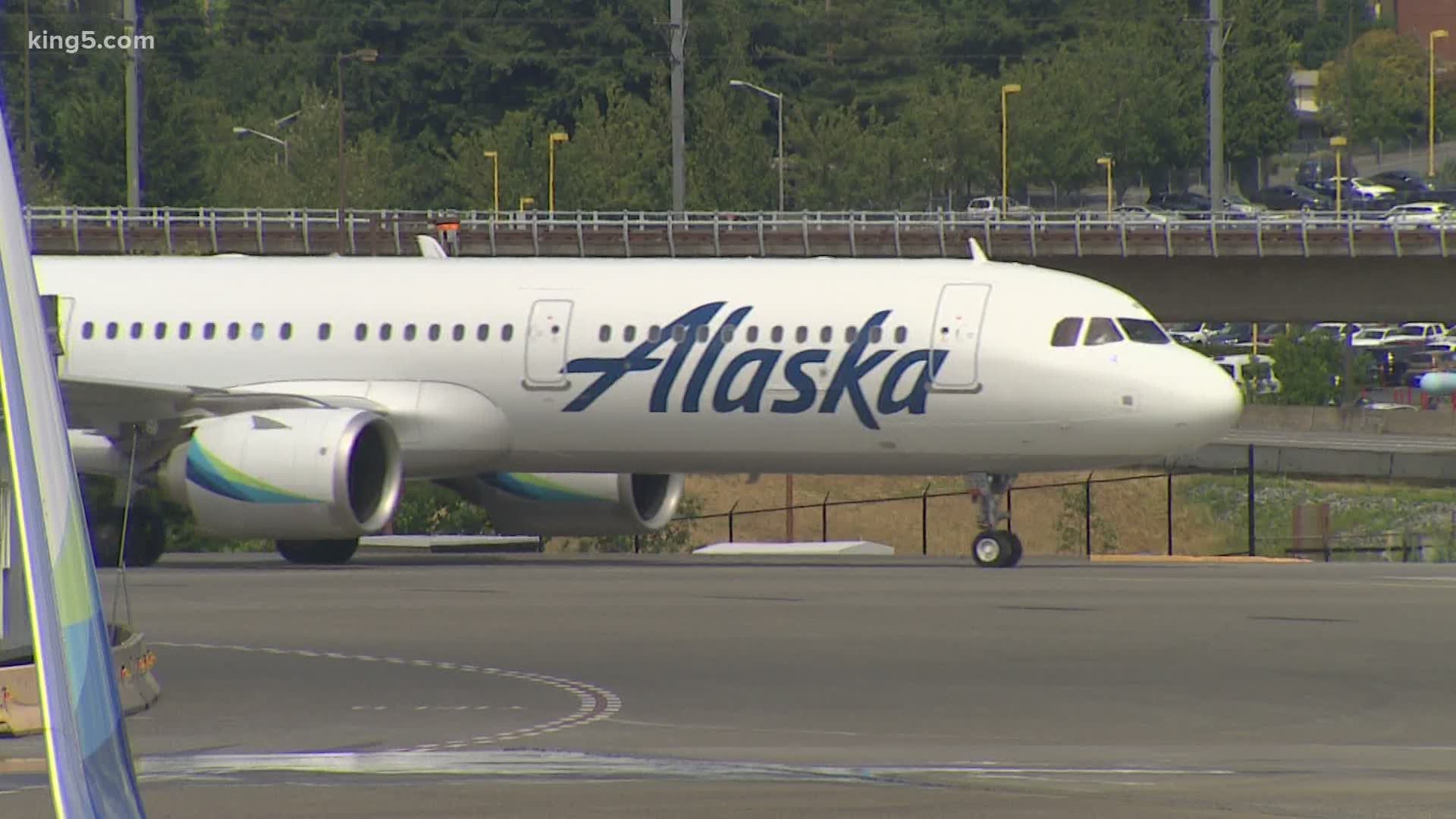
The carrier will ask travelers if they’re experiencing flu-like symptoms and whether they’ve been in close contact with anyone with respiratory illness.
SEATAC, Wash. – Alaska Airlines will soon ask passengers a series of pre-flight health questions as part of a new set of protocols meant to ensure health and safety during the coronavirus pandemic.
Starting at the end of the month, a “wellness agreement” will become part of the check-in process at airport kiosks, on Alaska’s app, and on the carrier’s website.
The questionnaire will ask travelers if they’re experiencing flu-like symptoms and whether they’ve been in close contact with anyone with respiratory illness. If they have, they would be subject to additional screening and could be required to book another flight, the carrier said.
“We’re excited for our passengers to fly again and we’re giving them every bit of information possible, so they know that we’ve taken every possible precaution and safety measure to make them feel confident in flying,” said Sangita Woerner, Alaska Airlines senior vice president of marketing.
Alaska, like the rest of the airline and travel industry, took a big hit as the coronavirus pandemic spread globally.
Passenger traffic is still nowhere near to what it normally is this time of year, but a Sea-Tac International Airport spokesperson said this coming weekend should be the busiest since the start of the pandemic in Washington, with a projected 11,000 departing passengers per day Thursday through Monday.
In the passenger cabin, there are new, more robust cleaning procedures, flyers must wear masks during their journeys, and Alaska is blocking off middle seats through July.
The carrier said travelers can take additional steps to stay healthy, like opening overhead air vents and leaving those open for the entire flight.
Hospital-grade HEPA air filters can remove airborne contaminants like COVID-19, the airline said.
Some customers who’ve had to cancel trips are still uncomfortable re-booking. Alaska, like other airlines, is letting them cancel without any fees and offering credits for future flights. The credits can be used through May 31st, 2022, Woerner said.
Alaska said if a passenger or crew member tests positive for COVID-19 after their trip, the CDC or local health departments will use the airline’s passenger list to notify others on the flight.
https://www.king5.com/article/news/health-questionnaire-to-become-part-of-alaska-airlines-check-in-process/281-f5ab5a81-c345-4571-a466-c4219d07835b
Alaska Airlines expands safety measures
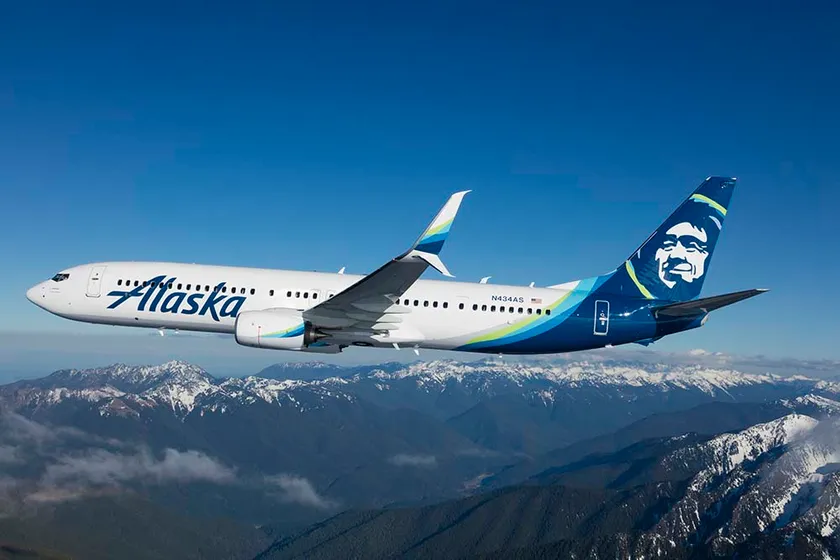
As the state loosens restrictions for travelers with hopes of salvaging the summer tourism season, airline companies continue to update safety protocols in response to the COVID-19 pandemic.
Alaska Airlines has announced an expansion of it’s Next-Level Care program, featuring safety protocols that the company boasts as being the “culmination of nearly 100 different measures”.
“COVID-19 has touched all of us in some way and it prompted us to fundamentally change the entire travel experience,” said Alaska Airlines CEO Brad Tilden. “Next-Level Care has been informed by medical experts, employees and guests, to ensure our customers are safe, whenever they’re ready to fly.”
The airline company says it consulted with University of Washington School of Medicine infectious disease experts, as well as longtime medical advisers, to update measures with the safety of guests and employees in mind.
In a press release, Alaska Airlines highlighted some of the near 100 policies included in the Next-Level Care expansion:
• Pre-travel and wellness agreement: Guests are encouraged to use the Alaska mobile app to enjoy a smooth and contactless trip. Starting June 30, flyers will be required to complete a health agreement during check-in and verify that they haven’t exhibited COVID-19 symptoms in the past 72 hours, come into contact with someone who is symptomatic and agree to bring and wear a face mask or covering.
• Physical distancing onboard: Guests can enjoy extra space on board. Through July 31, middle seats are blocked and flights will be capped at 65% capacity to allow for extra space between guests not traveling together. Families or large groups can request to sit together by calling Reservations.
• Guest and employee face masks and hand sanitizer: Face masks are required for all guests 12 and over, and for all airline employees. Customers are expected to bring their own mask and wear it at the airport and during their flight. Additional supplies are available for anyone who forgets a face covering. Hand sanitizer is available throughout the airport including the lobby and gate areas. Personal hand sanitizing wipes will be available onboard starting in July.
• HEPA air filters: With one of the newest fleets in the country, Alaska’s planes have the latest air filtration technology. Planes are equipped with two hospital-grade HEPA filters that remove 99.95% of airborne contaminants like COVID-19. The air filtration system cycles outside air on board to fully refresh cabin air every three minutes. Studies have shown with frequent air recirculation, cabin air filtration is comparable to the air quality found in hospitals. Guests can enjoy additional filtered air by opening their personal air vent after boarding.
• Enhanced cleaning: Alaska Airlines is exceeding CDC cleaning guidelines, using high-grade, EPA-certified disinfectant to clean critical areas throughout the plane. Overnight every plane receives a deep clean and all surfaces, including high-touch areas, are sanitized.
• Electrostatic sprayers: In addition to traditional cleaning with high-level disinfectant, planes are sanitized with electrostatic sprayers that disinfect surfaces throughout the cabin. The electrostatic sprayer allows the disinfectant to wrap around and cling to curved and cornered surfaces for an additional level of protection.
• Safety measures at airports: Employees clean all surfaces throughout the airport including counters, kiosks and other high-traffic areas several times a day. Social distancing decals have been placed throughout the airport to remind people to “Mind Your Wingspan.” The stickers span six feet apart and help minimize crowding and promote distancing at ticketing counters, baggage drops, customer service centers and gate areas.
• Boarding changes: At the gate, guests now board by row numbers in smaller groups, from the back to the front, to enable appropriate spacing.
• Limited onboard service: To reduce interaction between flight crews and guests, inflight food and beverage service has been temporarily reduced. Flyers may bring their own snacks and water bottles to #FillBeforeYouFly. All seatback content except for the safety card has been removed to limit the spread of germs. Alaska’s Beyond Entertainment is still free for guests to enjoy hundreds of movies and TV shows streamed directly to their device.
• Peace of mind policies: Change and cancellation fees are waived for travel for tickets purchased before June 30, 2020. Current elite status will be extended through 2021. Elite-qualifying miles earned between January-April 2020 will be rolled into 2021 to give guests a head start on earning status for 2022. Additionally, all active Lounge memberships as of April 1 will be extended by six months.
According to the airline, post-flight guest surveys conducted in May showed 82% of travelers experienced a safe and healthy in-flight environment and 95% were satisfied with the cleanliness of their seat area.
To learn more about Alaska Airlines’ Next-Level Care program, or to book a flight, visit AlaskaAir.com.
https://www.ktva.com/story/42228333/travel-tuesday-alaska-airlines-expands-safety-measures
Lack of social distancing rule makes American Airlines an outlier
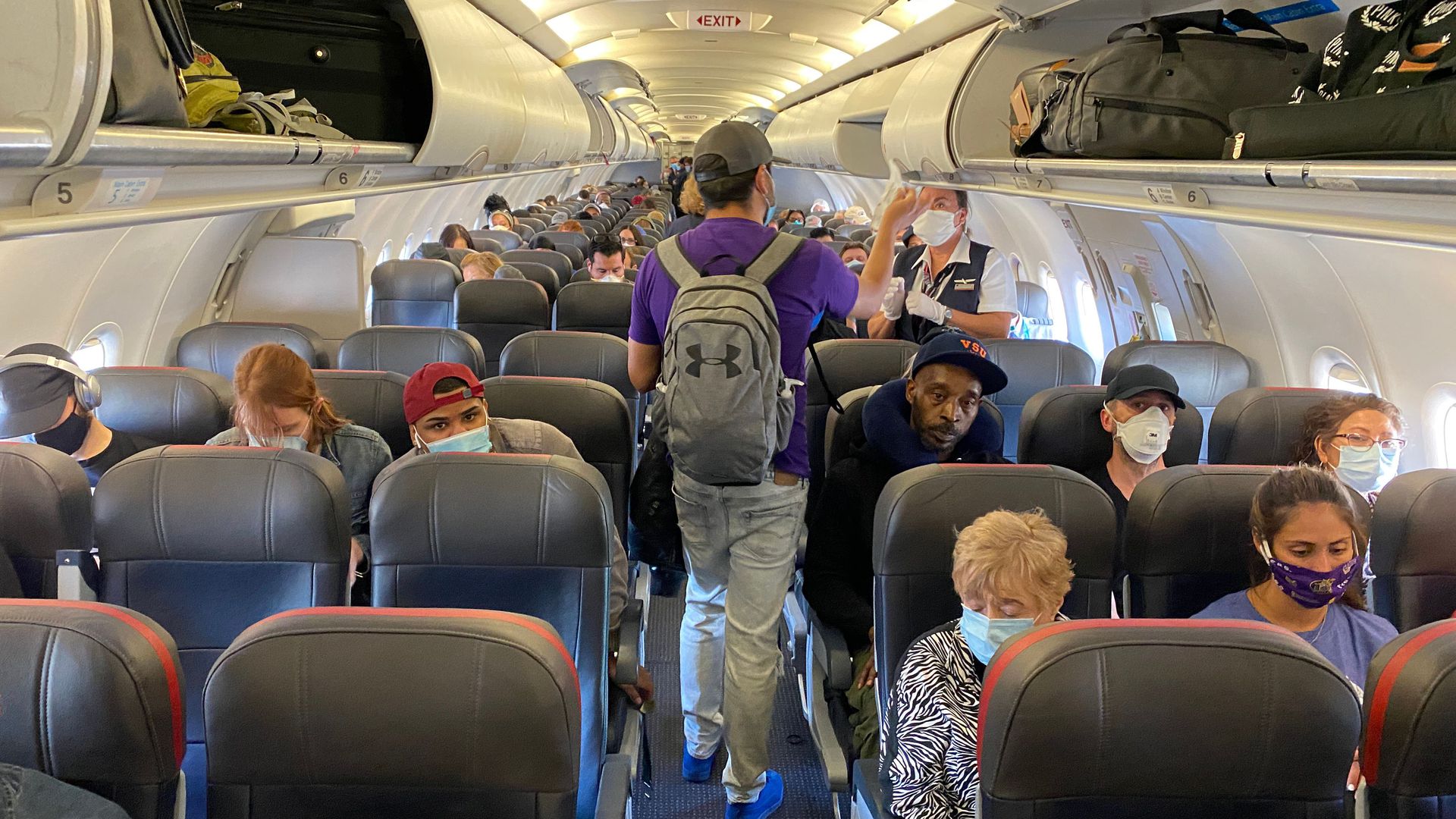
American Airlines is looking to pack more passengers onto flights in the coming months and unlike many peers has not instituted a seating cap to enforce social distancing.
Why it matters: That drive for more ticket sales at the possible expense of customer safety may be what’s helping its stock outperform other major airlines that have put policies in place.
By the numbers: Over the past month American’s stock has risen by nearly 90%, underpinned by a 41% gain on Thursday. Its stock price has nearly doubled since May 29.
Other airlines also have seen sizable gains but fall short of American’s rise, with United, JetBlue, Southwest, and Delta up 68%, 59%, 39%, and 51%, respectively, since May 4.
What they’re saying: “Our goal is to leave 50% of Main Cabin middle seats open, when possible, creating more space for customers,” American said in response to my tweet pointing out that I had – again – been put on what appeared to be a completely full flight.
American followed up in an email to say that my flight had 44 open seats, suggesting – again – that I believe their media relations team and not my lying eyes.
The state of play: The “when possible” policy sets American apart from other major airlines, which have instituted in-writing restrictions on flight capacity.
- United has the policy to allow passengers to choose to rebook on a different flight or receive a travel credit when flights are 70% full.
- Delta assures that its planes will fly no more than 60% full in its main cabin.
- JetBlue has the rule to leave middle seats open unless families are traveling together.
- Southwest has a 20% reduction in available seat miles.
The big picture: The decision is resulting in short-term gain, but could leave the airline open to long-term pain in the form of lawsuits, an attorney specializing in negligence and liability told Axios last month.
Flashback: CNBC reported on May 27 that “American Airlines has started alerting travelers about crowded planes before their trips and allowing them to switch to other flights.”
However, no announcement of that program could be found on American’s website and customer service representatives tell Axios that no such policy exists.
What they’re not saying: An American Airlines spokesperson did not respond to a request for comment on the policy’s existence. www.axios.com
Find true romance in Africa

If it’s not said at sunset, in Africa, on horseback, is it even love? Unless, of course, adrenaline is what shakes you and your partner to the core. Either way, Africa offers a multitude of ways to experience romance like you never have before. Find true romance in Africa, with these 9 unique ways to say “I love you” – safari style.
1. Take to the skies
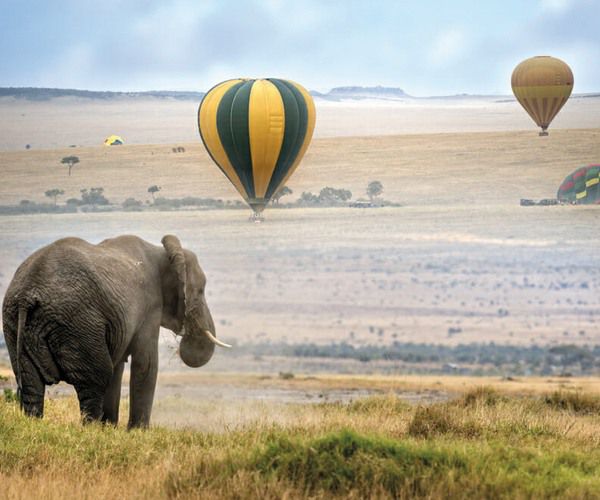
When most people think about taking a trip to Africa, they immediately think of safaris, and why not? Safaris offer you the opportunity to see the land and the animals up close in a way that you will likely never forget. But there is also something to be said for the bird’s eye view.
Enter hot air ballooning across the plains, grasslands and deserts of Africa.
Setting off in the soft light of early dawn, you will soar above some of the earth’s most majestic landscapes. See the world on the wind, floating high above, both detached and yet completely enveloped in its beauty all at once. You already feel like you’re walking on clouds when you’re with your loved one; now you’ll literally float amongst them.
Top pick
Head for Masai Mara National Reserve, Kenya, and stay at Alex Walker Serian’s ‘The Original’ Camp – one of of a select group of camps allowed access to this location.
2. Take a leap of faith
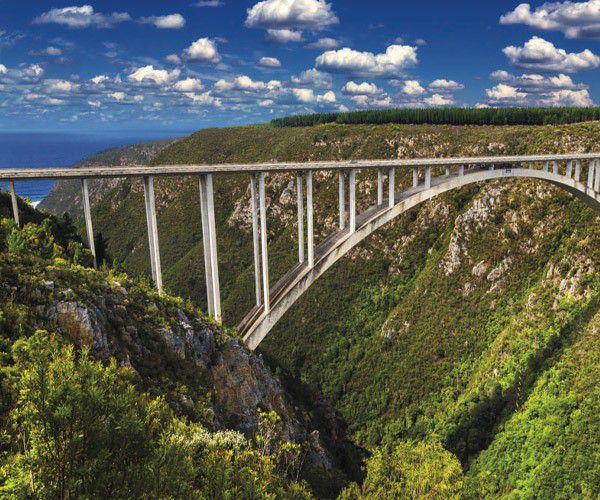
This may seem an odd choice for a romantic escape, but consider that bungee jumping is much like falling in love. Both will make your palms sweat, your heart race, and adrenaline surge through your veins. And both require you to take a leap of faith!
Bloukans Bridge is one of the highest commercial bungee jumps anywhere on earth, offering you a thrilling adventure that is as exciting and as unique as your love. This is something that no thrill-seeker should ever pass up!
Top pick
Head for Bloukrans Bridge, Western Cape, South Africa – home to the tallest commercial bungee jump in the world. Or fly off Victoria Falls Bridge, Zimbabwe/Zambia – set against the incredible backdrop of the Victoria Falls.
3. Brave the rapids
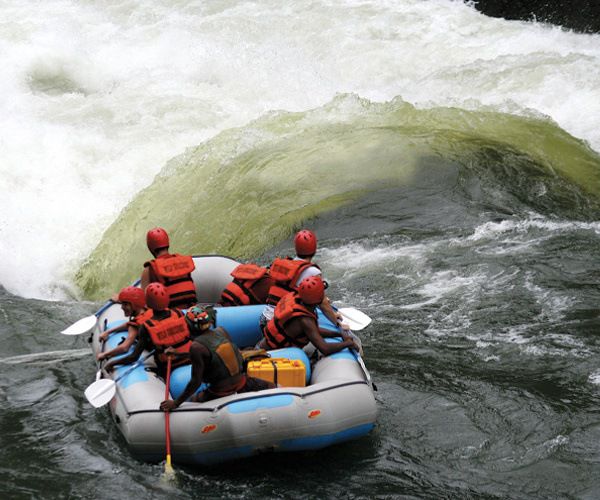
Another one for those seeking excitement, white-water rafting on the Zambezi river is a perfect analogy for your relationship. There will be calm moments of taking in the beauty of your surroundings, and thrilling moments where you ride the rapids. You will navigate them both together, the river carrying you along as one until you reach the far shore.
Top pick
No contest! Head for Victoria Falls, Zimbabwe. Until you’ve braved the white waters of the mighty Zambezi River, you can’t really say you’ve white-water rafted at all!
4. Hop on horseback
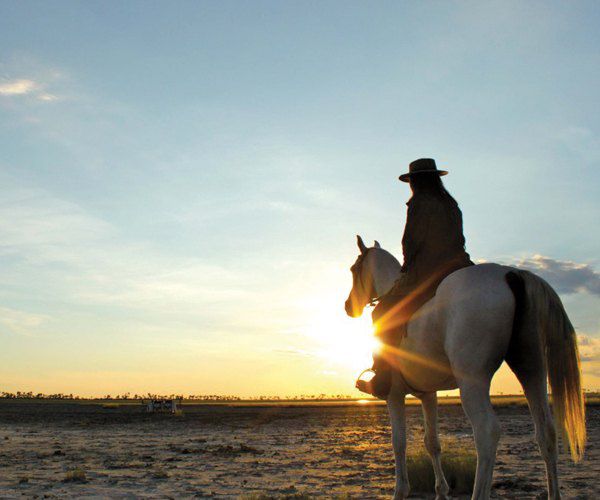
A unique way to see Africa, bringing you closer to the wildlife than would otherwise be possible, is to hop on horseback and head out into the wild. On a horseback safari, you will go places that vehicles cannot access and see sights that would otherwise elude you. A visit to Africa is all about nature, and what better way to experience it than by bonding with your mount on the ride of a lifetime?
Top pick
Riding on horseback across the Makgadikgadi Salt Pans of the Kalahari Desert, Botswana, with David Foot Safaris is the kind of experience that you have to live through to believe it actually exists. Or how about combining horses and hippos with Ride Zimbabwe Horseback Safaris? This spectacular safari will take you through Matobo National Park, Cawston Wildlife Estate & Mana Pool, Zimbabwe.
5. Picnic on the plains
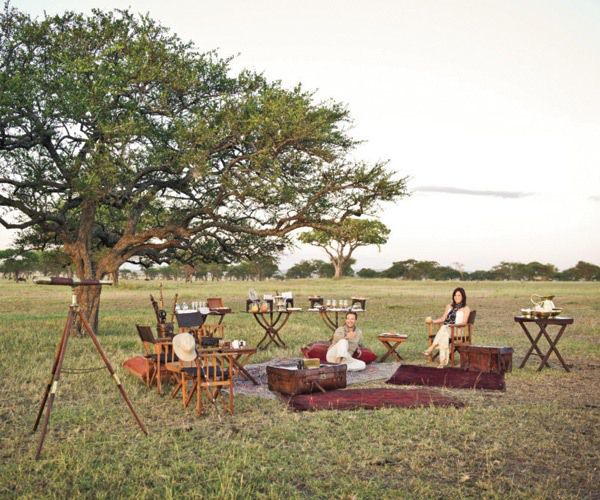
Picnicking with your loved one in the great outdoors is a classic romantic experience. But let’s not forget that this is no quiet afternoon in the park. This is Africa! Put a unique spin on this old standby by picnicking with some special guests: powerful, majestic elephants.
Elephants are wonderful to behold even from a distance, but having them so close (while in complete safety) gives an even greater appreciation of their majesty, not to mention photo opportunities. And don’t worry, you won’t have to share your meal with them!
Top pick
Zambezi Elephant Trails can turn this one-of-a-kind dining dream into a reality. Take a walk on the wild side through the Mosi-Oa-Tunya National Park, Zambia, to a riverside lunch spot straight out of ‘Out of Africa’.
6. Dine under African stars
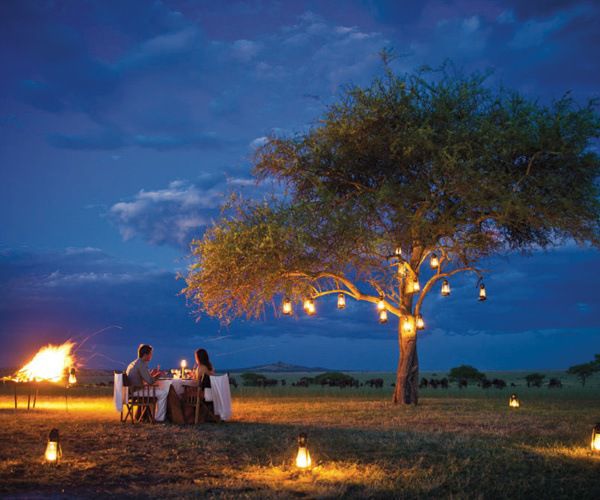
For many, vacations offer the chance to indulge in some of the finest foods, and a trip to Africa is no different. Enjoy some of the most delicious gourmet meals al fresco while sitting across from your love, as a candle flickers between you and the stars twinkle above. Gazing into each others’ eyes not mandatory, but highly probable. Let those African skies work their magic on your love life.
Top pick
Head for the international award-winning Lion Sands Ivory Lodge, located in the heart of the game-rich Sabi Sand Reserve, adjacent to the world-renowned Kruger National Park, South Africa. Not only will you dine under the stars, but you’ll also do so with your own private butler.
7. Slip into serious relaxation
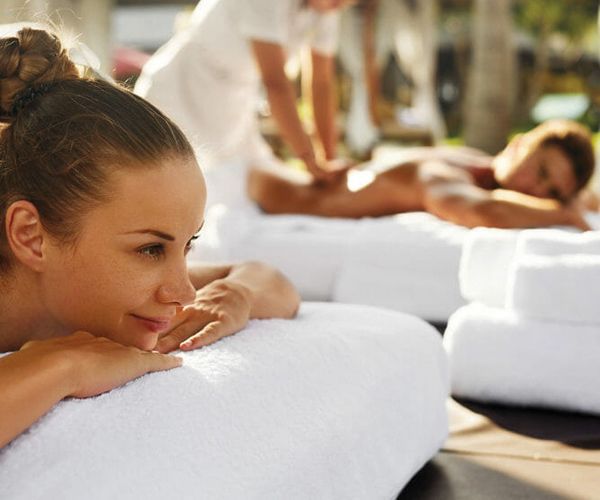
If white-water rafting and bungee jumping aren’t your thing, then perhaps your senses get their thrills from rejuvenation of body, mind and soul. Sink into a luxury yoga safari escape Malabar Hall, Zimbabwe, for a chance to discover more about one another while also discovering yourself.
Once you have re-balanced your mind and soul, it’s time to pamper your body at any of the amazing spa facilities found at the myriad of luxury safari lodges across southern Africa. These quiet moments can be blissful ones spent together.
Top pick
The Royal Bush Spa at the Royal Zambezi Lodge, Zambia, will leave you feeling like, well, royalty. Stunning views over the Zambezi River, the sounds of snorting hippos in the river and the sharp cries of the African Fish Eagle overhead to lull you into relaxation, and award-winning spa treatments.
8. Volunteer with rhinos
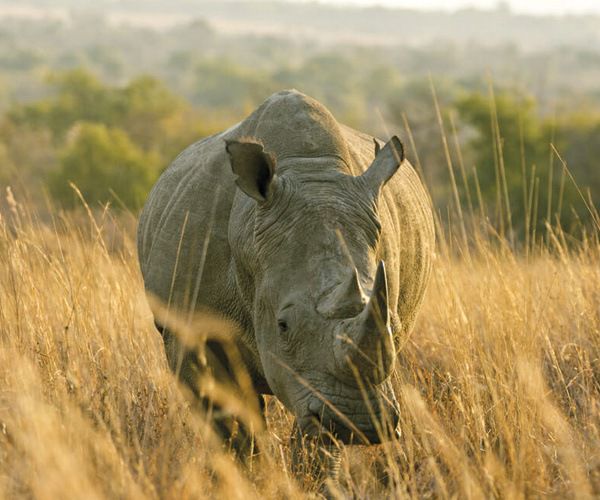
Get hands-on experience learning and volunteering with Imire’s black rhino conservation and breeding program. From hand-feeding young rhinos to learning how to track animals with anti-poaching patrollers, this promises to be a unique, etched-into-your-heart-forever experience. It’s truly one of the best relationship bonding activities you can do!
Top pick
Imire Rhino & Wildlife Conservation, Zimbabwe, offers luxury safari accommodations paired with the opportunity to contribute to an important conservation cause via hands-on volunteering with elephants and rhino. Magical Africa at its very best.
9. Let love blossom at sunset
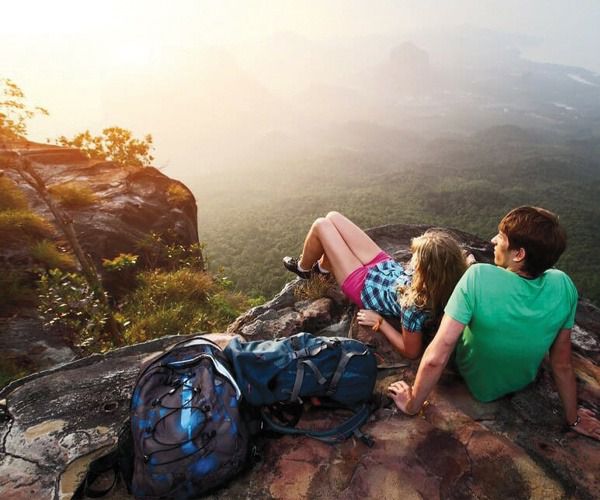
To be sure, you’ve seen the sun set before. But have you seen an African sunset? When shared, it is the kind of magical experience that turns friends into lovers; love into marriage; quarrels into forgiveness; talk into sweet talk. This is where romance really blossoms.
Mankind may have seen its first sunrise in Africa, but the sunsets, too, are not to be missed. Whether you are sitting quietly together on a deck being served hand and foot with that African sunset staple – an icy gin and tonic, out on a sunset cruise, or taking a quiet moment to yourselves in a luxury treetop tent, the sights, sounds and colours of the African sunset will make all other sunsets pale by comparison.
Top pick
There’s not a bad sunset to be had in Africa, no matter where you are.
By Daniella Ponter
WTTC supports ICAO ‘Takeoff’ Guidelines for safe flying
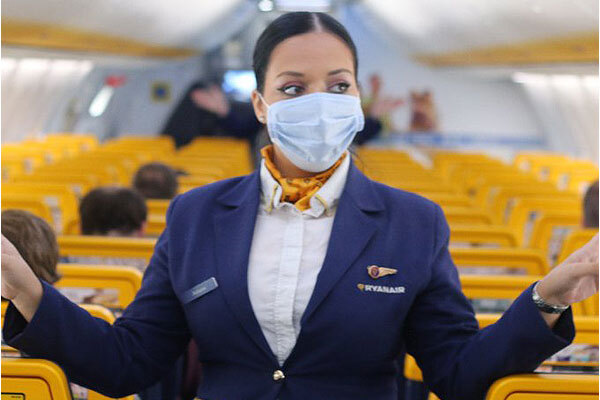
LONDON, UK – The World Travel & Tourism Council (WTTC) has welcomed the approved guidelines to safely restore global air connectivity, devised by the International Civil Aviation Organization (ICAO).
ICAO’s COVID-19 Aviation Recovery Task Force (CART) has worked with governments, health experts and industry stakeholders to agree and publish comprehensive recommendations for a layered approach of measures to reduce the risk of coronavirus transmission while traveling by air.
The measures are contained in ICAO’s ‘Takeoff: Guidance for Air Travel through the COVID-19 Public Health Crisis’.
They complement WTTC’s recently announced Safe Travels protocols, which were designed to drive the return of safe travel and enable industries such as tour operators, hotels, hospitality, travel companies, car rentals, MICE, retail and others, to thrive once again.
WTTC, which represents the global Travel & Tourism private sector, recognises ICAO guidelines due to the strictly regulated nature of the aviation sector generally and airlines in particular, and strongly supports the ‘Takeoff’ guidelines.
The WTTC Safe Travels stamp will recognise and could be used by countries and destinations that adopt the Safe Travels protocols and the ICAO Takeoff guidelines for aviation.
CART’s work was developed through broad-based consultations by ICAO with countries and regional organisations, and with important advice from the World Health Organization and key aviation industry groups including the International Air Transport Association (IATA), Airports Council International (ACI World), the Civil Air Navigation Services Organisation (CANSO), and the International Coordinating Council of Aerospace Industries Associations (ICCAIA).
Gloria Guevara, WTTC President & CEO, said: “The safety and hygiene measures taken across the travel experience will be key to rebuild the confidence of travellers and restarting the Travel & Tourism sector.
“The leadership shown by ICAO’s Secretary General, Dr Fang Lui and the President of the ICAO Council, Salvatore Sciacchitano, in the CART process gives the aviation sector the global approach it needs to align its many participants with measures which reassure travellers by reducing the risks of COVID-19 transmission.
“We congratulate ICAO on developing this critical guidance for aviation in cooperation with key industry associations, including IATA and ACI. We now urge governments to adopt them and best practices as quickly as possible, so we can save a sector that is already in a fight for survival.”
Evidence from WTTC’s recently released Crisis Readiness report, which looked at 90 different types of crises in the last 20 years, highlights the importance of public-private cooperation and the implementation of standardised protocols to reduce the time to recover.
According to WTTC’s 2020 Economic Impact Report, during 2019, Travel & Tourism was responsible for one in 10 jobs (330 million total), making a 10.3% contribution to global GDP and generating one in four of all new jobs.
https://www.traveldailynews.com/post/wttc-supports-icao-takeoff-guidelines-for-safe-flying
Russian art project to ward off the lockdown blues has become a viral on social media

A Russian art project intended to ward off the lockdown blues has become a viral sensation on Facebook as pent-up Russian speakers from across the globe reenact paintings to pass the time amid the coronavirus pandemic.
Called Izoizolyacia — roughly meaning “Art Isolation” — the Facebook group says it’s for people with “limited movement and unlimited fantasy.” It invites members to re-create masterworks but with one important restriction of its own: Use only what you have at home.
In a little over a month, the community has grown to more than a half-million members. Using household items, food, raided wardrobes, and a familiar Russian-inflected sense of irony, members have produced dizzyingly creative remakes of everything from European masterpieces to Soviet agitprop and coronavirus-influenced memes.
Take Elena Nikolaenko, 36, who moved from Russia’s Far East to Toronto five years ago. She re-created Raphael’s 16th-century Sistine Madonna with her husband, mother, and three children.
“My mother came up with the idea while stuck here because of the travel bans,” Nikolaenko says. “She noticed the picture had the same number of people as we had in our family.”
Nikolaenko adds that her 11-year-old son, Timofei, “has been amazed by the response,” now at more than 79,000 likes.
In the age of Instagram, it’s no surprise that visual artists, celebrities, and influencers have also gotten in on the act. But it’s average people — and ordinary bodies — who often generate the most laughs and, often, likes.
Olga Blytova, an oral surgeon based in St. Petersburg, Russia, created a self-portrait inspired by a statue of ancient Egypt’s Queen Nefertiti.
The project started with a few friends in Moscow looking to entertain each other as the city began enforcing self-isolation rules as the virus took hold in April.
“I took a picture of my husband, tagged it Izoizolyacia, and asked a few others to join,” says Katerina Brudnaya-Chelyadinova, 38. Her husband, Dmitry Dolgorukov, donned a hat and painted beard for the project’s first post — a quick riff on Vincent Van Gogh’s Self-Portrait with Straw Hat from 1887.
The post got a few laughs, sure, but there was little sense of what was to come.
Some friends responded. Then more submissions trickled in from across Russia. Soon posts were coming in from Ukraine, Georgia, Israel, Western Europe, North America, and beyond.
“We did nothing. It was completely organic,” says Brudnaya-Chelyadinova. She quickly assembled a team of volunteers to help curate an online exhibition that defies national boundaries but shares a certain cultural affinity. For more
Exciting new cars of the near-future

As car technology continues to develop rapidly, we are seeing more green vehicles than ever before and the rise of artificial intelligence in the automotive industry.
New vehicles and tech advancements have got car enthusiasts excited for years. That’s why concept cars are so pawed over.
If, like me, you’re wondering what you’ll be driving in 10 years’ time, read on! I’ve put together a list of the top candidates. These are the most exciting cars being developed right now, blogs Tamara Hinson.
Here’s the lowdown on the concept cars generating the biggest buzz.
Audi AICON
The Audi AICON probably isn’t for you if you’re the kind of driver who loves getting behind the wheel, because there isn’t one.
The four-door electric car, unveiled at last year’s Frankfurt Motor Show, has a sleek glass roof and four electric motors, with one positioned over each wheel.
The most impressive claim? Audi says the car’s battery can be charged to 80 percent capacity in just 30 minutes, and the AICON can also be charged wirelessly. The mind boggles at such technology!
Lexus LF-1 Limitless
The recently unveiled Lexus LF-1 Limitless is a super-sized vehicle being marketed as a more realistic take on the future of luxury SUVs.
It won’t double as a living room or charge with the tap of an iPhone, for starters. What it will do is get you from A to B in comfort and style, thanks to a series of touchpads and a glass roof that stretches the length of the vehicle.
It’s certainly one of the sleeker concept cars we’ve seen, thanks partly to the decision to replace wing mirrors with 360-degree cameras, the presence of wraparound rear lights, and an incredibly low profile.
Mazda Vision Coupe
When it came to this concept car’s design, Mazda dug deep, researching the Japanese concept of ‘ma’ (negative space) and combining flowing lines with a sporty silhouette.
Designers focused on creating a sense of spatial harmony between the driver and the four-door car’s controls, aided by the use of touchpads.
They also took their time. While concept cars are often knocked up in under 12 months, Mazda produced 10 sculptures over the space of two years prior to unveiling the Vision Coupe.
BMW Concept 8 Series
BMW’s 8 Series is a hi-tech beast.
There’s a heated steering wheel, an entirely-digital instrument stack, and radar-assisted cruise control. But, it’s also one of the most stylish concept cars around. This is thanks to flared rear arches housing 21-inch alloy wheels, an oversized kidney grille, and a distinctive carbon fiber front lip.
When the car was unveiled at the Concorso d’Eleganza Villa d’Este in Italy, I was instantly smitten with its color. The shade, Barcelona Grey Liquid, was designed exclusively for the concept car.
Honda Clarity
Full disclosure – this is no longer a concept car. It’s now available in the US, but it’s yet to be available in the UK.
But, I reckon its status as the world’s most advanced fuel cell vehicle justifies its inclusion, and I also love the fact that it comfortably accommodates five passengers – a first for this type of vehicle.
It’s also got the longest maximum driving range rating of any zero-emission vehicle (650 kilometres), and the use of ultra-high tensile steel means it weighs 15 percent less than other vehicles of similar sizes. Worth moving to the US for? You decide.
Mercedes-Benz F015
Yes, this four-door car might bear an uncanny resemblance to a mole, but on the inside, it’s a work of art.
Designed to be both a vehicle and a private retreat, the interior is a lounge-like space, complete with coffee table, bucket-style, face-to-face seats, and interior panels which double as high-resolution screens.
Mercedes-Benz promises that the car, which will be an electric hybrid, will be able to cover similar distances to diesel vehicles, but on electricity alone and with no emissions.
Nissan IMx KURO
Say hello to the Nissan IMx KURO, which uses what Nissan refers to as Brain-to-Vehicle (B2V) technology that has the ability to interpret signals from the driver’s brain to assist with driving.
The steering wheel also houses Nissan’s ProPILOT system, which enables fully autonomous operation – with just the flick of switch drivers will be able to recline the car’s seats and let the computer take the wheel.
VW ID BUZZ
A modern twist on the world’s most iconic campervan, the VW ID BUZZ can travel up to 965 kilometers on a single charge.
VW’s Intelligent Co-Pilot system enables the vehicle to assess dangers and respond accordingly. Clever positioning of the electrical components allows the front and rear axles to be spaced far apart, creating a spectacular sense of space.
All eight-passenger seats can move independently, and a built-in tablet allows drivers and passengers to control everything – from air-conditioning to audio – with minimal movement.
Bentley EXP 12 Speed 6e
Bentley’s concept car, unveiled last year, is both convertible and electric – my favorite words.
I’m particularly taken with the center console – a huge section of curved glass incorporating a high-definition OLED display. There’s more glass in the steering wheel, where controls for media, communications, and navigation sit beneath hand-cut glass panels. My favorite bit is the button at the top of the wheel. Engraved with the image of a rocket, a quick press will instantly boost the car’s performance. https://www.avis.co.uk/inspires/
What happens to your voucher, travel miles and credit card if the airlines goes bankrupt?
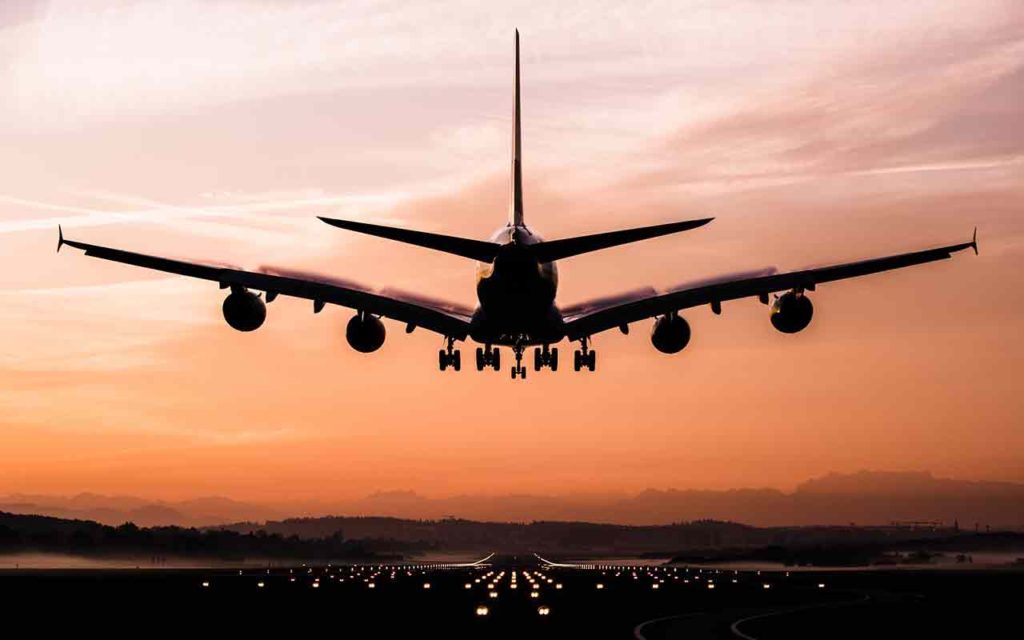
The financial horizon looks uncertain for the airline industry, several are on the brink of running out of cash, loaded with debt due to recent massive aircraft acquisitions. Some warn about the possibility of bankruptcy. Consumers could face the loss of those canceled tickets. What happens to your voucher, travel miles, and airline credit card if they go belly up?
Air travel has all but come to a halt as the number of COVID-19 cases around the world has continued to grow. Passenger volume is down some 97%, according to industry trade group Airlines for America, reaching levels not seen since the 1950s. The average flight today is only transporting 10 passengers, down from around 100 before the coronavirus crisis.
Boeing Chief Executive David Calhoun suggested that a major airline in the U.S. will “most likely” go under as a result of the coronavirus pandemic during a recent appearance on NBC’s “Today” show. He added that it could take three to five years for the industry to recover to the passenger levels seen before the outbreak.
U.S. carriers’ stocks have tanked in response. Warren Buffett recently revealed that Berkshire had sold off all of its holdings in the airline sector, including stock in Delta, American Airlines, and Southwest.
‘If one of the nation’s biggest airlines went belly-up, it would create an absolute tidal wave of refund requests, and it is unrealistic to think that banks would grant them all.’ — Matt Schulz, a chief credit analyst at LendingTree
As the coronavirus crisis worsened, airlines quickly began adopting relaxed policies allowing passengers to receive travel vouchers and to rebook trips without incurring fees if they wanted to change their travel plans. But airlines have been stingier when it comes to providing full refunds.
A recent study estimated that airlines have distributed $10 billion in vouchers since coronavirus reached U.S. shores. While most airlines refused to confirm the value of the vouchers they had extended, the senators used data provided by JetBlue to reach that amount.
Most airlines will only give you a voucher if you cancel your trip. Of the airlines contacted by the lawmakers, only Allegiant and Spirit said they were providing refunds to passengers who voluntarily and proactively cancel their tickets during the coronavirus crisis.
Other airlines, including United, Delta, American, and Southwest told lawmakers they were only providing refunds to customers in cases where the airline itself chose to cancel a flight or significantly alter its itinerary. Therefore, passengers who want to proactively cancel their tickets with these airlines generally can only get money back in the form of a voucher. And in most cases, those vouchers have an expiration date.
Additionally, one airline, Hawaiian said it will provide refunds to customers if they originally received a voucher after they proactively canceled a flight that the airline then subsequently canceled. Alaska directed to the company’s policies regarding vouchers.
Frontier Airlines stated “Frontier will continue to evaluate our change and cancellation fee policies on an ongoing basis, and Frontier is committed to providing full refunds to customers who are eligible for a refund as determined by the fare rules and Contract of Carriage pertinent to their ticket,” Barry Biffle, CEO of Frontier Airlines, said in the letter.
Southwest said that customers on canceled flights can request a refund to the original form of payment. In cases where a customer cancels travel proactively, the airline is offering vouchers valid until September 7, 2022. That time frame was “extended from the usual time frame of one year from date of purchase, in light of the current circumstances,” a Southwest spokesman said.
But these policies aren’t consumer-friendly, advocates say. “There’s no benefit to taking the voucher,” said Chris Elliott, a travel consumer advocate. “All the benefit is to the airline.”
Depending on how the bankruptcy is handled, ticket-holders may or may not be in the clear. Often companies use bankruptcy as a legal tool to restructure its debts — in other words, an airline that goes bankrupt won’t necessarily be liquidated. In the last few weeks, Virgin Australia and Avianca took court protection.
“Alitalia, for example, has been in some stage of bankruptcy proceedings since 2017 yet has continued to fly,” said Ted Rossman, industry analyst at CreditCards.com on Tuesday. Colombia’s Avianca airline, one of Latin America’s largest airlines, filed for bankruptcy protection on Monday. But he added, “Avianca hopes to get back in the air once the coronavirus pandemic subsides.”
Here’s what consumers need to know:
There’s no guarantee that a liquidated airline will directly reimburse would-be passengers for the cost of their airfare.
Investors who own corporate debt and the stock would be paid back first, said Sara Rathner, travel and credit-card expert at NerdWallet. In other words. That, she added, “means you’re out of luck.”
Customers, meanwhile, are considered “unsecured creditors,” said Paul Hudson, president of consumer-advocacy group FlyersRights.org. The FAA requires airlines to have insurance for this, he said, but a payout could take a while if it comes at all.
Vouchers don’t have a cash value. In lieu of refunds, the vast majority of airlines have provided travelers who pro-actively cancel trips because of coronavirus with vouchers or credits. “They would lose their money,” Chris Elliot, a consumer advocate, said.
Travel vouchers don’t actually have a cash value. As a result, if a traveler is worried about their airline going under before all is said and done, they may be better off booking a trip using their voucher and then taking out a travel insurance policy on that trip that covers bankruptcies, Rathner said.
Your credit card company could bail you out. You can request a refund or charge-back from your credit card company if the airline goes belly up, experts said. (Debit cards may also provide some protection in these cases, but the claims process with credit cards is generally smoother, Rossman said.)
These requests can be made online or by phone. Making a request is no guarantee of receiving a refund, warned Matt Schulz, chief credit analyst at LendingTree.
“It certainly doesn’t hurt to ask, but you shouldn’t consider it a slam dunk that you’ll get your way,” he said. “If one of the nation’s biggest airlines went belly-up, it would create an absolute tidal wave of refund requests, and it is unrealistic to think that banks would grant them all.”
Timing is another critical issue. Under the Fair Credit Billing Act, consumers only have 90 days after your purchase to file a claim, Elliott said. “Banks sometimes will give you more time, but technically you only have three months,” Elliott said.
Your travel insurance policy may not protect you. If an airline liquidation hampers your travel plans, your travel insurance policy may cover some of the costs. The key lies in the fine print.
“Look at the policy’s terms and conditions to ensure it covers financial default, and make sure the airline you’re flying is a covered supplier,” Rathner said.
Frequent-flyer miles may be useless. “If an airline goes out of business, it would be bad for its elite-status members and frequent flyer-mile holders, but they still might be able to get some value,” Rossman said.
If the airline ends up merging with a surviving carrier through the bankruptcy process, those miles would likely be converted into the new airline’s program. This happened several times during the last decade when Continental and United merged or when American Airlines went bankrupt.
Some airlines have split their loyalty program into separate companies, Rossman said, which could survive the bankruptcy. Many carriers also have “status match” programs to attract frequent-flyer members from other airlines. These programs will give you the equivalent status, and surviving airlines could use these programs to attract elite members from the defunct carrier.
But retaining frequent-flyer miles or status is far from guaranteed. “Rewards are not considered property, and can be eliminated by the airline program at their discretion,” said Brett Holzhauer, travel and credit-card expert at LendingTree.
“If an airline looks like it will go out of business, people who have frequent-flyer miles should consider using them for flights or converting them into other purchases such as merchandise or gift cards,” Holzhauer said.
You must pay off your airline credit card. Many people sign up for co-branded credit cards from airlines to get attractive perks, including travel credit rewards, but just because an airline goes out of business doesn’t mean you can avoid paying off your credit card bill.
“Unfortunately for those with credit-card debt, you do still owe the card company if the airline/store closes, and there can be major consequences for your credit score if you don’t pay, ” Rossman said.
How to get a refund from an airline
Certain steps a consumer takes will improve the likelihood of receiving a refund in a timely fashion, according to consumer advocates:
- Contact the airline in writing. Phone lines at most airlines right now are flooded with people canceling or changing travel plans. “Don’t try to call,” Elliott said. “They will put you on ‘hold’ for half an eternity.” Instead, he recommends putting requests in writing.
- Take your request to social media. If you’ve been denied a refund, you might have luck if you complain on Facebook or Twitter. “If enough people take this action by posting and tagging the airline or hotel chain, it may cause them to reconsider their policy during this time,” the U.S. PIRG, a consumer advocacy group, recommends on its website.
- See if your credit card company can help. Many credit card issuers are relaxing their own refund rules for travel-related purchases right now, U.S. PIRG said.
- Wait until closer to your travel date. Airlines are bogged down with cancellation and refund requests right now. Waiting will avoid being on hold for an extended period of time. Also, airlines could cancel your flight in the interim, which would make getting a refund easier.
Early in April, the Department of Transportation issued an enforcement notice to remind domestic and international air carriers operating in the U.S. that “passengers should be refunded promptly when their scheduled flights are canceled or significantly delayed.”
By law, passengers traveling by air in the U.S. can get a refund if their flight is canceled and they choose not to re-book. Passengers are also entitled to a refund in the event of a significant delay or schedule change, though the Department of Transportation has not defined these terms. The department says it determines whether passengers are entitled to a refund for a significant delay on a case-by-case basis.
That has created a gray area for airlines though, Elliott said, which could make it harder for consumers to get a refund.
And while airlines are set to receive billions of dollars in bailout funds from the federal government, that money is meant to help the companies’ employees and not consumers.
Avianca Holdings files for bankruptcy
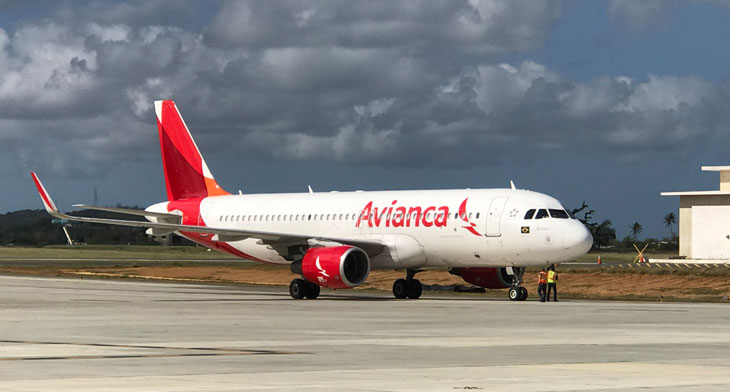
According to simplefying.com Avianca Holdings, the parent company of Avianca has filed for Chapter 11 bankruptcy in the United States. The proceedings are intended to protect the airline from creditors and allow the company to reorganise which, it is hoped will save much of Avianca’s business structure as possible.
Chapter 11 will allow the airline time to pay its debt back, while still keeping the company intact. The impact of COVID-19 has had a major impact on the airline’s operations resulting in hundreds of flights being cancelled. The airline intends to restructure through a court-supervised process. The plan for Avianca is to continue to provide air transport while this process takes place. As one of the largest airlines in Latin America, the loss of the operator would have a major impact on the South American continent.
Avianca has stated that it plans to maintain essential services to South America and North America. The airline will continue to seek financing assistance from the Colombian government.
Frontier Airlines ‘more room’ policy causes mayhem

Frontier Airlines, the US LCC has faced a huge backlash over its decision to make passengers pay more for a seat positioned next to a vacant middle seat. Under its ‘more room’ policy it was intended to give flying passengers piece of mind, as they would be able to sit on their own for an increase in their ticket price.
Criticism from both passengers and lawmakers, has seen the LCC has withdrawn the offer and will now be blocking the middle seats off at no increase in ticket price.
Peter DeFazio, chairman of the House Committee on Transportation and Infrastructure described the promotion as “capitalising on fear”, saying the policy as “outrageous” and described the airline as trying to make a quick buck.
Frontier Airlines CEO Barry Biffle shared his thoughts in a letter to lawmakers following the fallout, as reported in NBC, saying:
“We recognise the concerns raised that we are profiting from safety and this was never our intent…We simply wanted to provide our customers with an option for more space.”
More US carriers instruct passengers to wear face masks in the cabin
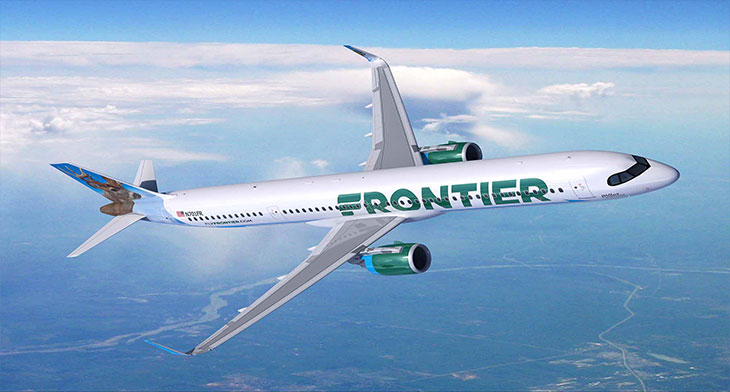
A further three more US carriers have announced plans to require all passengers to wear face coverings when in the cabin in response to a US Congressional calls for a national policy over the issue to be announced amid the COVID-19 pandemic.
American Airlines, Delta Air and Denver-based ULCC Frontier Airlines have each announced that they will request all passengers wear a mask or face covering while boarding, and in the cabin, beginning from early May.
The wearing of masks is a result of pressure in Congress for a national policy over public concerns about the safety of air travel. The chairman of the US House Transportation Committee, Rep. Peter DeFazio (D-Oregon) recently raised the issue on Capitol Hill urging FAA Administrator Steve Dickson to implement a nationwide mandate for the wearing of masks aboard aircraft.
“I believe these measures are not only well within the FAA’s jurisdiction, but are also essential to protect frontline airline employees as well as the members of the flying public who still must travel during the pandemic,” said DeFazio in a statement.
The Air Line Pilots Assicotation has been critical of the process calling for the FAA to implement a more rigid system where the wearing of masks in mandatory in the cabin and not a voluntary decision for each passenger.
Car accessories for a long-haul road trip
If you’re embarking on a long-haul road trip, make space for one of these fantastic car accessories. Road trips are best enjoyed when the route ahead is clear and everything runs smoothly from start to finish. Sure, you may want to veer off route to experience some hidden gems and untrodden paths. But, every adventurer needs the support of some handy technology to help them on their way.
I’ve put together a list of my favorite car accessories, designed to save you time, space, and peace of mind, during those long hours cruising the open roads, blogs Tamara Hinson.
Campingaz Powerbox, £61.89.
Long gone are the days when Campingaz was merely a canned gas supplier.
One of their most popular products is this hi-tech cool box, which can run off either a 12V car plug-in or a 230V electrical outlet (cables for both are included.)
Unlike some electrical cool boxes, it’s a wonderfully quiet device, so once you’ve arrived at your destination you can drift off to sleep while your food stays fresh.
It’s also got an antimicrobial lining, which provides protection against mold and reduces unpleasant odors. Designed in a range of sizes, it can be easily stowed – whether you’ve hired a Mini or a Mercedes.
Suaoki U10 Car Jump Starter 800A Battery Booster Pack, £59.99.
Who knew a jump-starter kit could be a product of such beauty? Every road tripper should set off with one of these.
No matter how much you love the route you’ve chosen, being stuck there due to a flat battery will quickly dampen your enthusiasm.
I also love the fact that it comes with a micro-USB cable, meaning it can be used to charge certain smartphones and tablets. And, there’s no excuse for letting its battery drain as it can be charged using either the mains power adaptor or the in-car charger.
Handpresso Auto Capsule, £175.
A must for dedicated coffee-lovers, the Handpresso Auto Capsule is an espresso machine for your car.
Features such as the anti-spray nozzle allow you to enjoy your favorite coffee without risk of mess or injury! The Handpresso Auto Capsule, pictured above, only uses capsules – which is a big novelty.
Part of a larger Auto range from Handpresso, you can use Senseo pods with the Handcoffee Auto and ground coffee with the Handpresso Auto.
Simply plug any of these fantastic models in and you’ll be sipping your favorite blend in no time.
Nextbase iN-CAR CAM 512G, £179.99.
A growing number of drivers are installing in-car cameras as protection against damage caused by reckless road users.
This particular model is the first to have an anti-glare polarising filter designed to cut out windscreen reflection. Six individual layers of glass also ensure crystal-clear vision, and an ultra-wide field of view (140 degrees to be precise) means the camera won’t miss a thing.
UE Boom 2, £169.99.
This Bluetooth waterproof speaker is ideal for long journeys and it’s blissfully easy to use.
To start with, it has both Siri and Google Now voice integration. You can play, pause, or skip a song by simply tapping the speaker, which can be accessed by two other people.
Its waterproof feature makes it the perfect accompaniment to an adventurous road trip. It’ll also last for 15 hours on a fully charged battery.
Un air de Diptyque car diffuser, £45.
After a few hours on the road, even the cleanest of cars can begin to pick up an unpleasant scent – especially if it’s a hot summer’s day.
Yet, that doesn’t mean you need to resort to installing a forest of tree-shaped air fresheners swinging from the rear-view mirror. Instead, give your car a fragrant upgrade with help from this beautiful diffuser by perfume brand Diptyque.
After you’ve attached it to the air vent, insert one of the fragrance cartridges, which come in six different varieties. I’d recommend Orange Blossom (inspired by Florida’s state flower.) This will provide a warming blast of citrus, whether you’re driving through Kissimmee or Croydon.
Celestron 18774 PowerTank, £74.45.
This superbly bright torch, with a 12V power supply, will have you reaching for your sunglasses.
In addition to the main torch, there’s also a smaller, built-in flashlight. If that’s not enough, there are two USB ports for charging portable devices, along with booster terminals to help charge weak car batteries.
The device is easy to charge itself – plug it into your car’s cigarette lighter (adaptor included.)
Car technology continues to evolve at a staggering rate. Whether it’s new mobile apps or the rise of driverless cars, there seems to be a new development every month. These car accessories will all enhance a long-haul road trip, giving you the time and space to enjoy a luxurious adventure wherever you choose in the world. www.avis.co.uk/inspires/
American Airlines, Delta, United will require facial coverings on U.S. flights
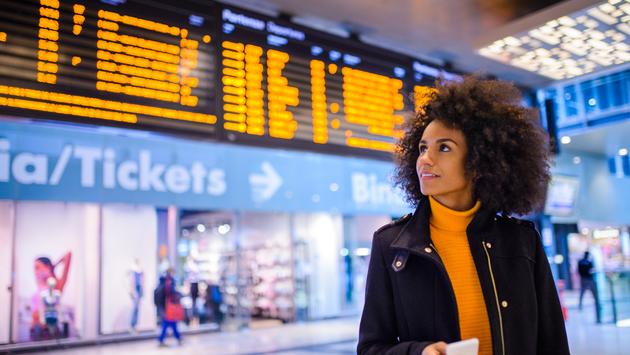
Three of the largest four U.S. airlines said Thursday they will require passengers to wear facial coverings on U.S. flights, joining JetBlue Airways Corp in taking the step to address the spread of the coronavirus and convince reluctant passengers to resume flying.
United Airlines, Delta Air Lines Inc and American Airlines Group Inc, along with the smaller Frontier Airlines, which is owned by private equity firm Indigo Partners LLC, announced they will require facial coverings next month.
Delta and United’s new rules start May 4, while Frontier’s start May 8 and American’s requirements begin May 11. The policies exempt young children from wearing masks or other facial coverings.
Many U.S. airlines are also requiring pilots and flight attendants to use facial coverings while on board aircraft.
Airlines in the United States have seen a nearly 95% drop in U.S. passengers and have slashed flight schedules. They are now working to reassure customers about the safety of air travel by instituting new cleaning and social distancing procedures.
Some airline unions and U.S. lawmakers have urged the Federal Aviation Administration (FAA) to require facial coverings for all passengers and crew.
United said it will provide complimentary masks to passengers. Southwest Airlines Co, one of the largest U.S. airlines, has not required facial coverings.
The FAA has declined to implement the requirement, and it is not clear if the agency has the authority to compel passengers to wear face masks. The FAA said Wednesday it is “working with air carriers to ensure they have processes in place for addressing public health risks for their crews and passengers.”
Representative Peter DeFazio, who chairs the House Transportation Committee, called on the FAA Wednesday to “require masks or other face coverings for all crewmembers and passengers on U.S. flights” and to require airlines “adopt reasonable, sound procedures for ensuring that passengers are spaced at safe distances from one another.”
Delta said the airline will require face coverings “starting in the check-in lobby” and at “Delta Sky Clubs, boarding gate areas, jet bridges and on board the aircraft for the duration of the flight – except during meal service.”
Delta added their use “is also strongly encouraged in high-traffic areas, including security lines and restrooms. People unable to keep a face covering in place, including children, are exempt.”
American said the rules will prioritize “customer and team member well-being.”
German airline group Lufthansa also said this week it would require facial coverings for all passengers starting May 4.
Sara Nelson, international president of the Association of Flight Attendants union, praised the carriers adopting the requirements and added “absent federal action, we need every airline to require passengers wear face coverings to keep everyone safe in aviation.” www.nytimes.com
Southwest does not see a return to normalcy for the foreseeable future

Southwest Airlines does not see a return to normalcy for air traffic demand in the foreseeable future. It is maintaining service to all domestic cities in its network, including five destinations in Hawaii, but has significantly cut capacity as it plans for passenger traffic demand to be reduced for the long term because of the COVID-19 pandemic.
Nearly half of the Dallas-based LCC’s fleet of Boeing 737 aircraft is either in short- or long-term storage.
The airline’s capacity is down 70% for the last two weeks of April compared with pre-COVID-19 schedules and will stay down 60-70% for the full month of May. June capacity is currently scheduled to be down around 50%.
Southwest ended the first quarter with 742 aircraft in its fleet, all 737NGs or 737 MAXs, but has moved 106 737NG aircraft into a long-term storage program. That adds to the 34 737 MAX aircraft that were already in long-term storage because of the type’s worldwide grounding, meaning the carrier now has a total of 140 aircraft in long-term storage.
The 737NG aircraft placed in long-term storage “were selected based on their age and the proximity to an upcoming significant heavy maintenance requirement,” Southwest COO Mike Van de Ven said during an earnings call with analysts and reporters on April 28. “So, for those aircraft in long-term storage, it will take a minimum of three or four days of time and probably more to bring each of those aircraft current with respect to their maintenance programs before they can be reintroduced into the active fleet.”
Additionally, Southwest has another 250 737NGs in short-term parking programs that rotate in and out of active to flying. “The benefits of the short-term parking program is that the aircraft do remain part of the active fleet and it’s more cost effective in terms of storage costs than the long-term storage program,” Van de Ven said.
“At this point with a lot of the country still sheltering in place and many states continuing to have some level of travel restrictions in place, we’re continuing to see record low passenger demand and revenue trends here in April and May with operating revenue down roughly 90-95% year-over-year and single-digit load factors,” Southwest president Tom Nealon said.
“At this point, it is very, very tough to predict exactly how and when we’ll see trends turnaround. So, we’re staying focused on those things that we can control and that we can manage—we have control of our flight schedule.”
Southwest reported a rare quarterly net loss in the first quarter of $94 million on operating revenue of $4.2 billion, down 17.8% YOY.
“Excluding working capital changes and proceeds from the payroll support program of the CARES Act, our cash burn for April is roughly $900 million and that includes capex and debt service,” CEO Gary Kelly said. “Our goal will be to drive that lower in May and June through more aggressive schedule cuts and hopefully increasing revenues.”
Kelly said Southwest will have social distancing procedures in place on aircraft. Though it does not assign seats, it will not book full flights and will assume all middle seats will be kept empty.
Thanks to payroll assistance from the US Congress’ CARES Act, Southwest will not cut the size of the airline in terms of fleet or employees before Sept. 30, Kelly told CNBC in an April 28 interview. But he added: “We’ll just have to see where we are after Sept. 30. If the traffic doesn’t materialize, then there’s no choice but to downsize the airline. It’s just premature to make those judgments.”
Kelly said he does not foresee air traffic demand coming back anytime soon. “I think a lot of things are going to have to happen for the country to come back to life, much less air travel,” he told CNBC. “If people are going to travel, they’re going to need to have something to do when they get there. So, Disney World needs to open up, restaurants need to open up, that kind of thing.”
JetBlue will require passengers to wear masks and other airlines will provide them
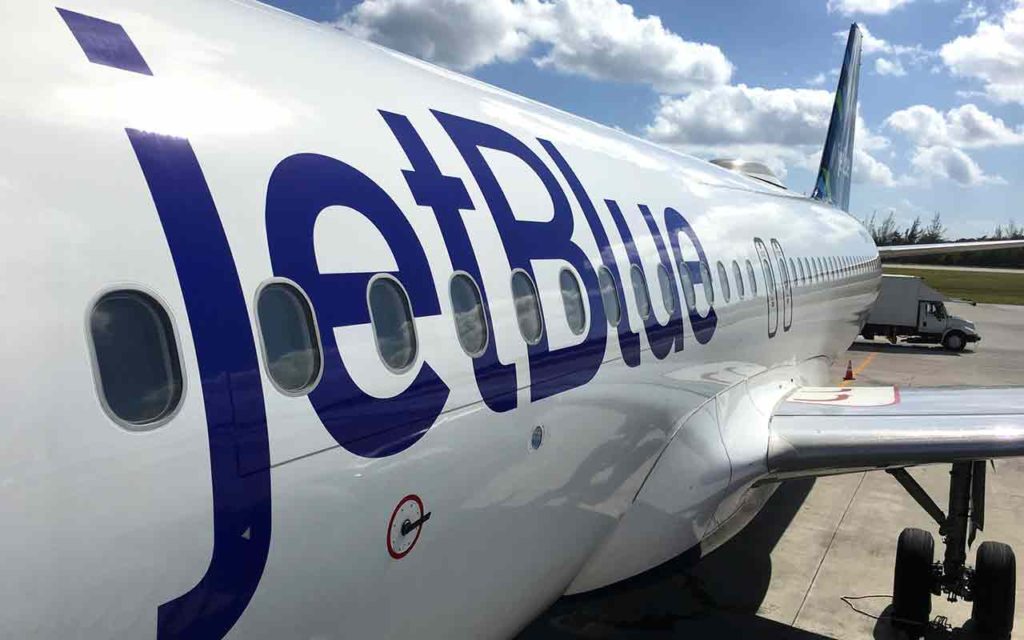
Starting May 4, all JetBlue Airways passengers will be required to wear a face covering, the strictest policy so far in the U.S. and one that follows the New York-based airline’s requirement that flight attendants wear a mask or face covering while on duty.
“Wearing a face covering isn’t about protecting yourself, it’s about protecting those around you,” said JetBlue’s President Joanna Geraghty. “This is the new flying etiquette.”
American Airlines and Delta Air Lines earlier Monday said they will require thousands of employees to wear face masks and provide masks for passengers.
Airline labor unions have repeatedly demanded stronger protections against coronavirus. While air travel in the U.S. is down some 95% from a year ago because of the virus and stay-at-home orders around the world, flight crews have raised concerns about catching the virus on the job and have sought federally mandated procedures.
“All airlines should follow JetBlue’s lead, including its efforts to fully communicate the change before it becomes effective next week so that Flight Attendants are not put in the position of being enforcers without information and backing from the airline,” said Sara Nelson, president of the Association of Flight Attendants, which represents some 50,000 cabin crews, including those at United, Spirit and others.
American said next month it will start handing out face masks and sanitizing wipes for passengers and require that its roughly 30,000 mainline and regional flight attendants wear masks while on duty.
Fort Worth, Texas-based American is also going to step up cleaning procedures to disinfect areas including tray tables, seat belt buckles, window shares and seat-back screens, galleys, jump seats and surfaces in the cockpit.
“Our team members on the frontline are truly going above and beyond during this time,” said Kurt Stache, American’s senior vice president of customer experience. “Their commitment is nothing short of incredible and we will continue to work with them to make sure they have the equipment they need to feel safe.”
Delta said it will require employees to wear masks or face coverings any time it’s impossible to keep a distance of six feet between themselves and a customer or another employee, starting on Tuesday and through June 30 “at which time we will reevaluate and update as necessary.”
“We are strongly encouraging our customers to wear masks and will make them available at ticket counters, gates and onboard airplanes,” four Delta officials said in a staff memo, which was seen by CNBC.
United Airlines last week started mandating masks or other face coverings for flight attendants, following similar moves by JetBlue and budget carrier Frontier Airlines. www.cnbc.com


